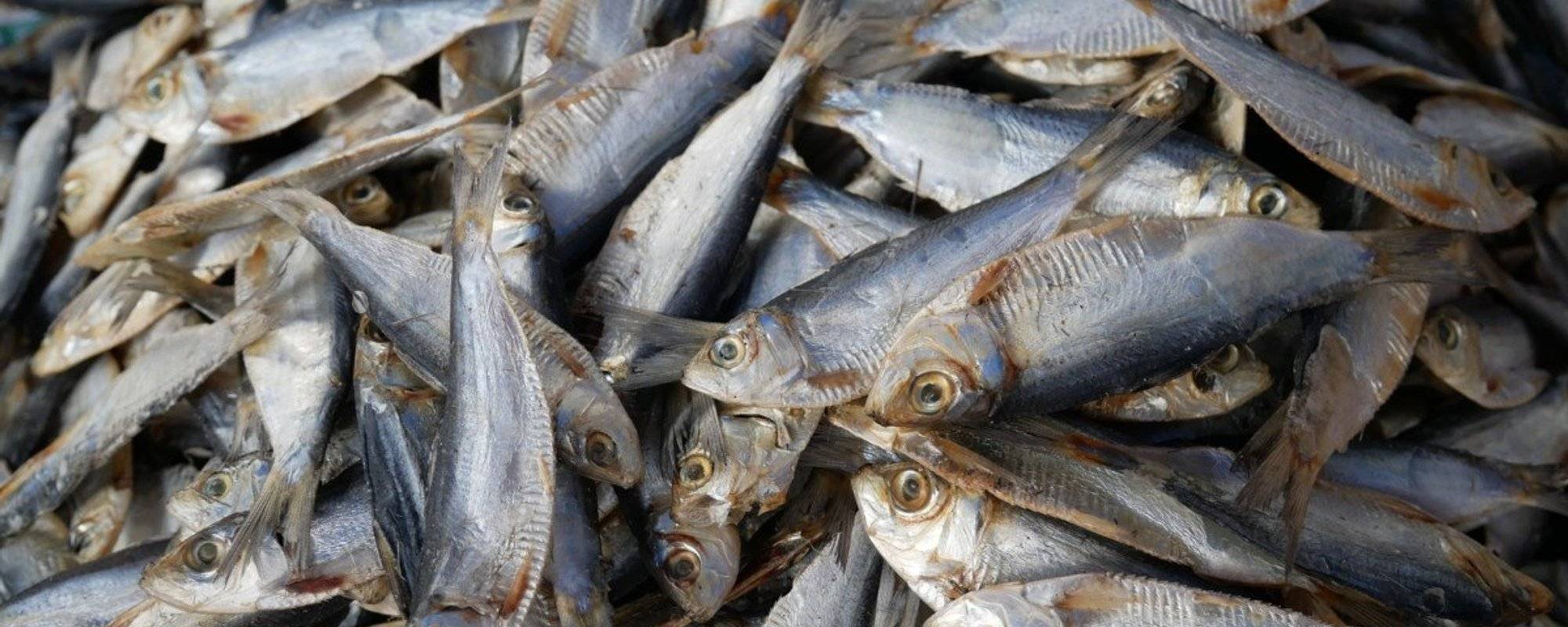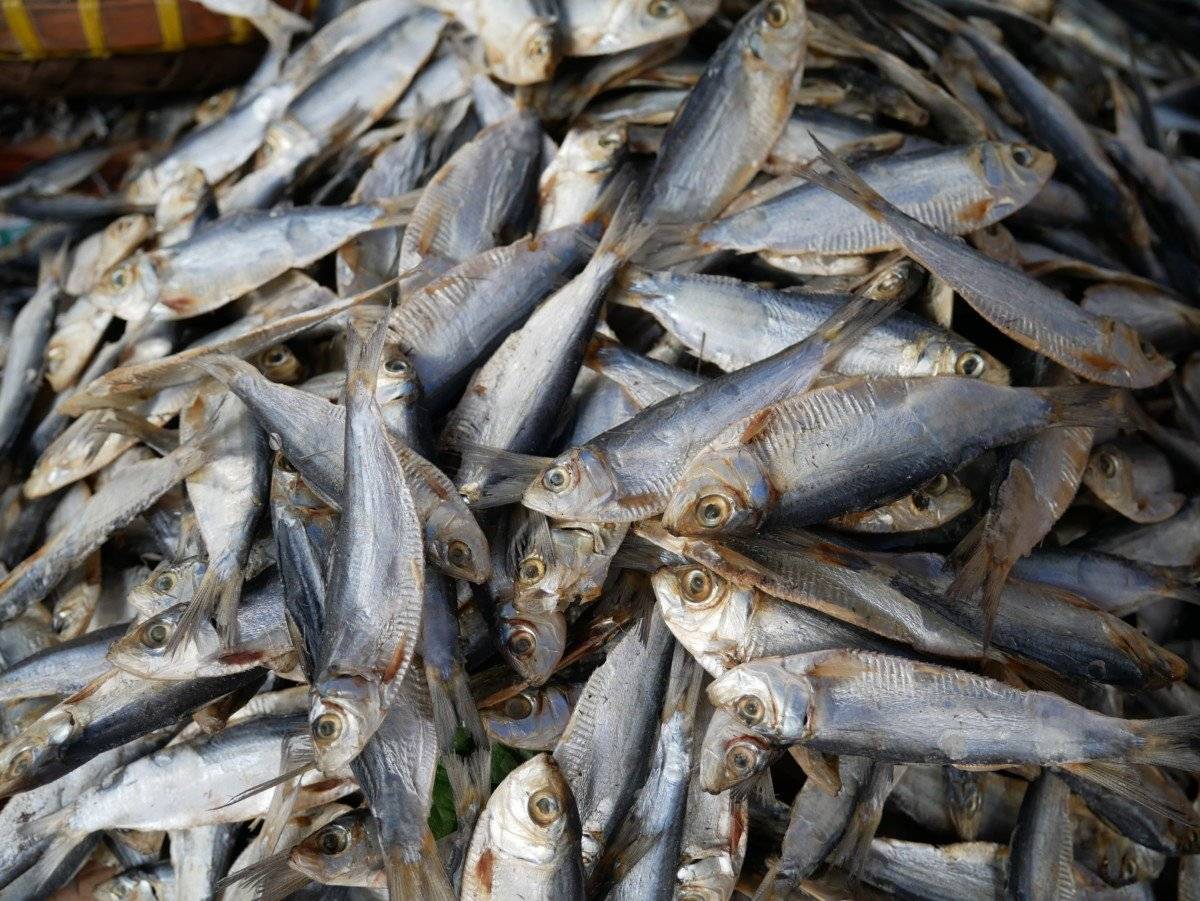
My Share for #BeautifulSunday initiated by @ace108
Also my share for #Marketfriday by @dswigle
It's another beautiful day and it is time again for me to share another part of our travel, in the Bicol Region of the Philippines. Last time I took you along with me on a 10 hour long road trip that led us to coastal village. Today on the second part of our journey I will take you on a tour around one of the public markets in Bicol. If you would like to see how a typical market looks like in our country, then hop on as we go shopping.
Balatan Public Market

If you missed the road trip you can check the first part of our adventure below.
Part 1 The Long and Winding Road to Bicol
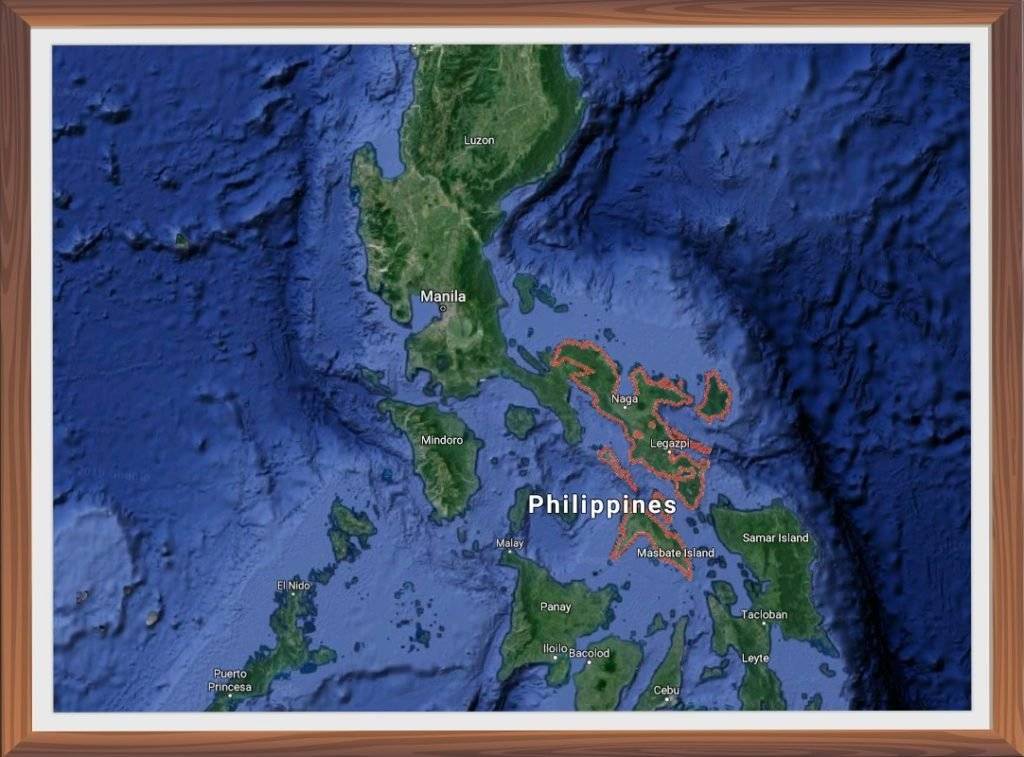
After a good night's sleep, I was fully recharged from that very long drive going to the village. Waking up early morning I immediately headed to the beach to hear the gentle sound of waves. The sound that I wish to hear every morning as I open my eyes. I'd better make the most out of it as I don't get chances like this too often.
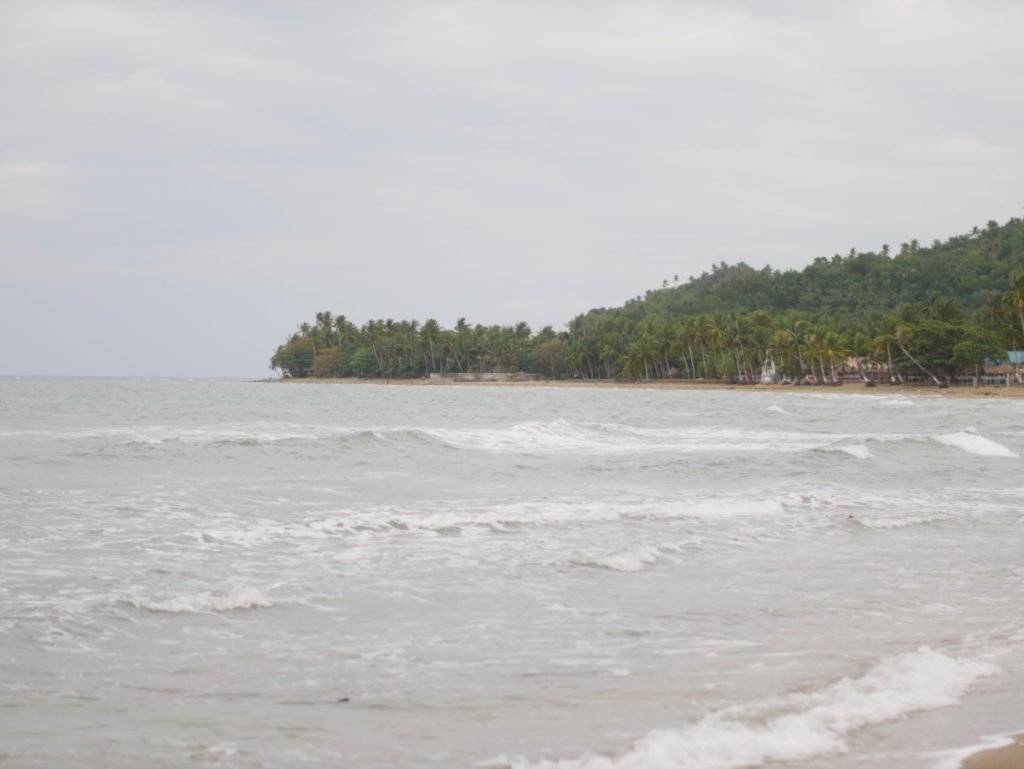
As I headed back, I asked Ate Daisy what was our agenda for the day. She said that we are going to the market to buy food and some supplies. Markets are full of surprises especially in different regions as market produce differ in each place. I got excited as I wanted to see what the market has to offer. Sometimes we see different species of seafood and vegetables every time we visit markets in our country.
From our location in the village, it will take you around 6-7 minutes by car to reach the market area. I was also told that majority of the people here do their shopping during Friday. Friday is the day where there are a lot of good for sale at the market.
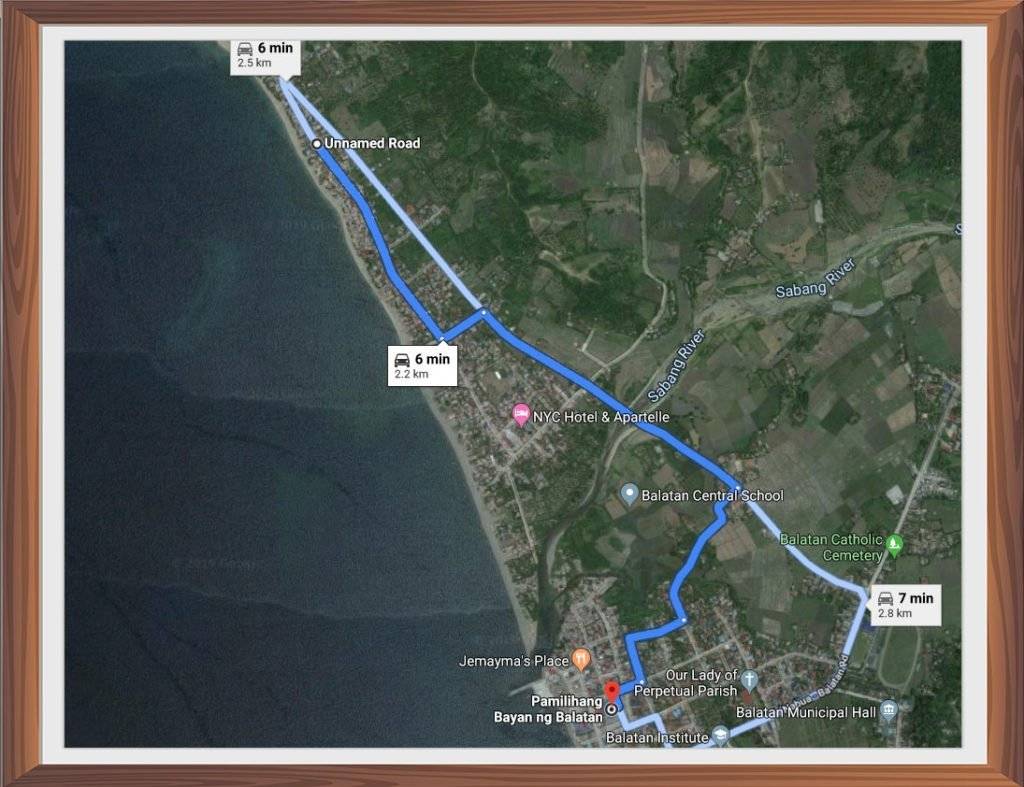
Upon reaching the market, you could already see fish for sale by the road.
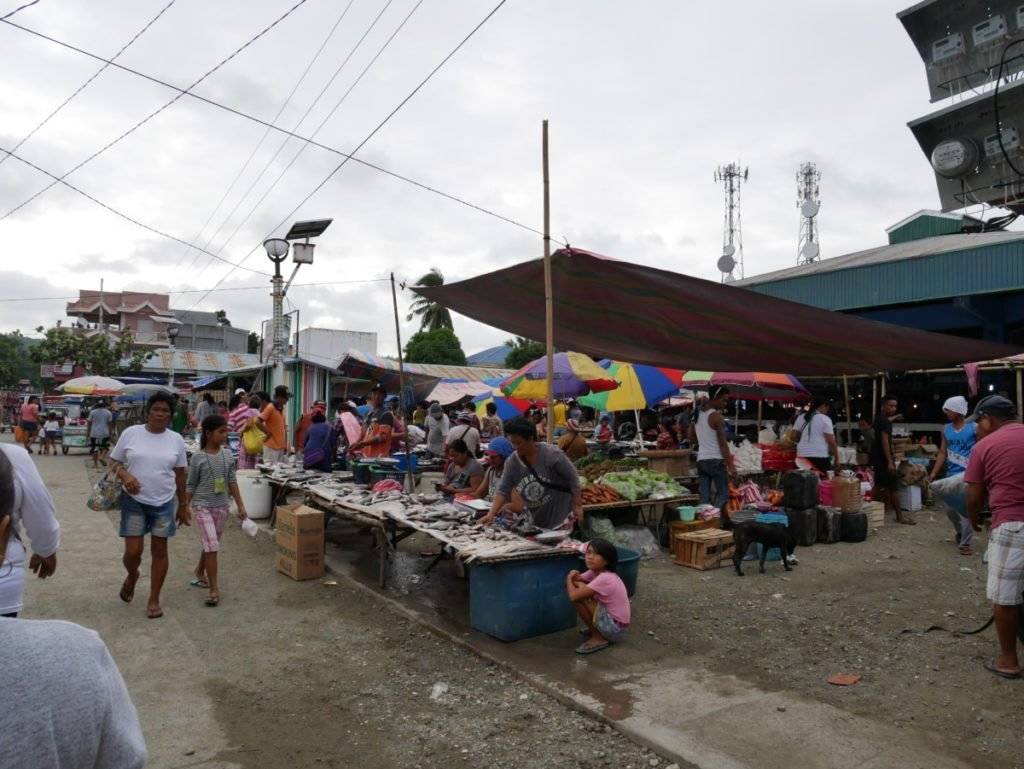
Vendors will be calling you out to buy some of their fish.
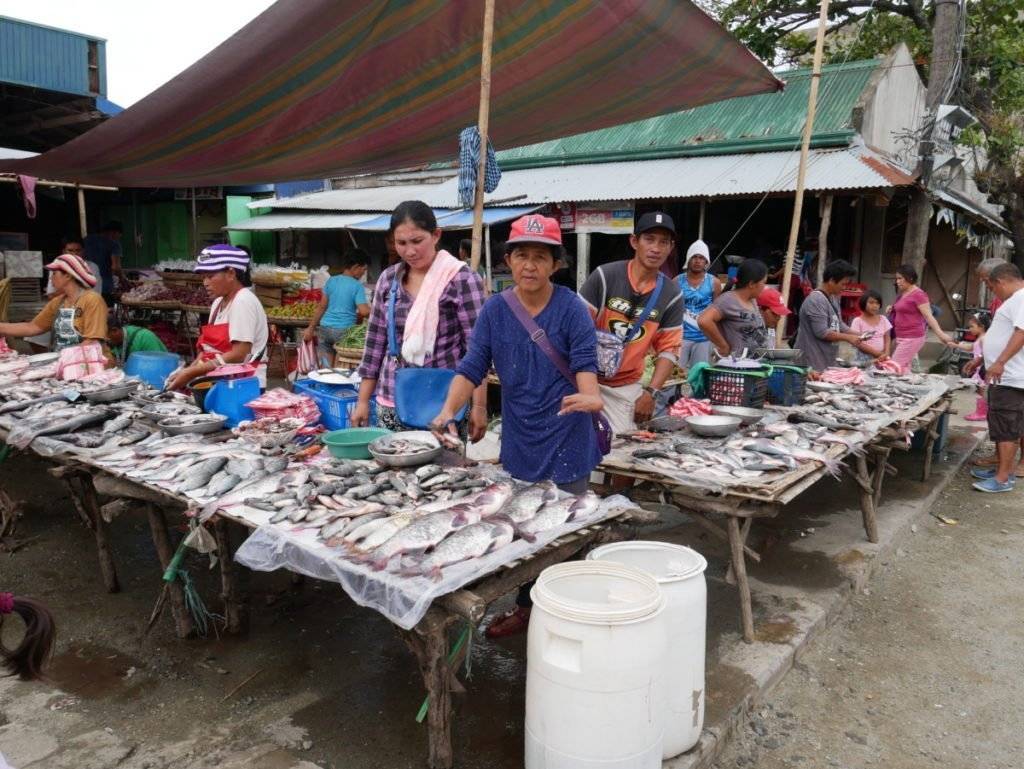
You could get a good price for fish here if you know how to haggle.
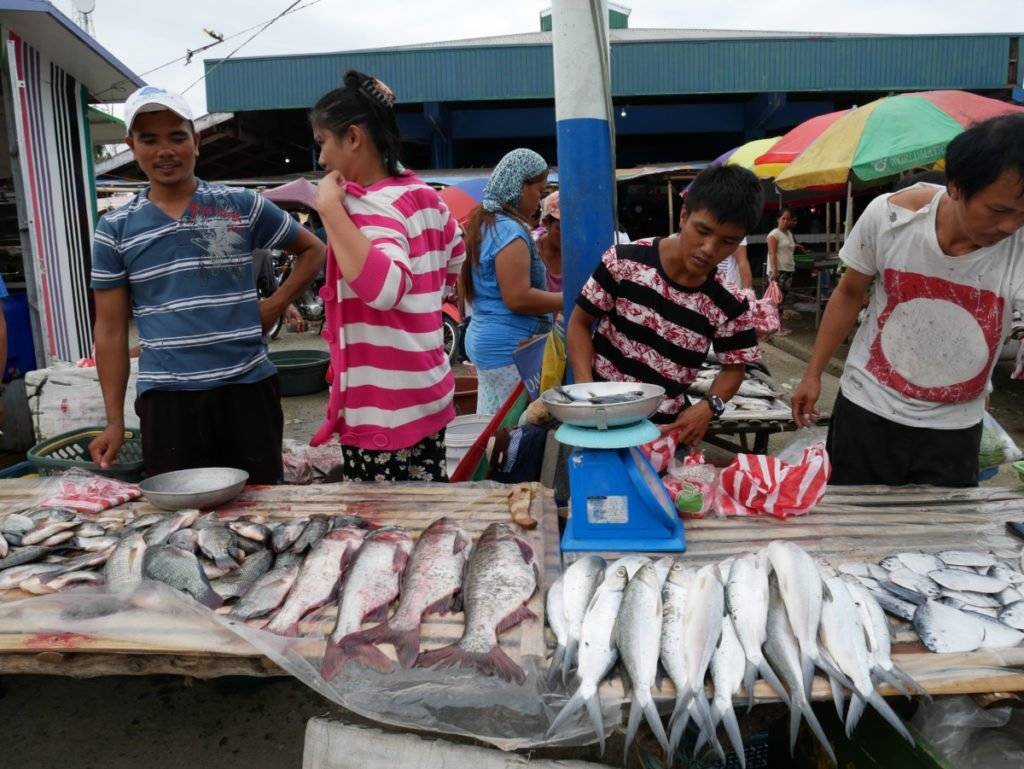
I asked what type of fish are these as I do not see this kind of fish at our market back home. They said this is a species of Carp and has a very strong fishy taste when not cooked properly. I have never tasted carp before, but maybe next time we will give it a try.
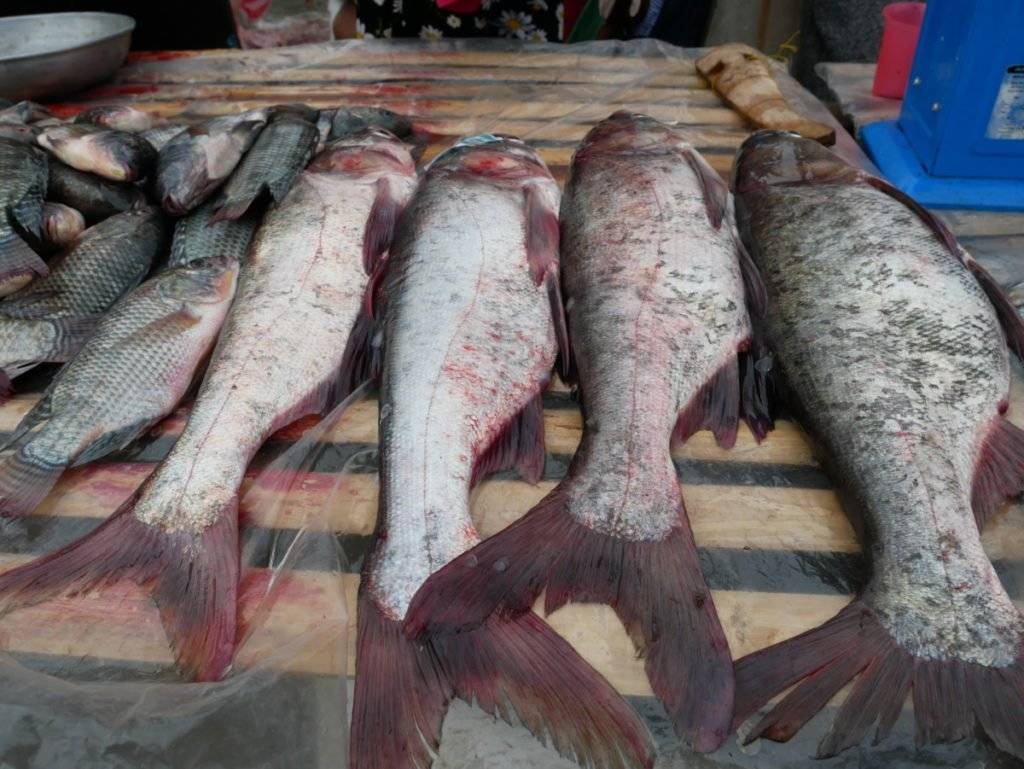
Tilapia is very common in our country this fish can be bought almost anywhere in our country.
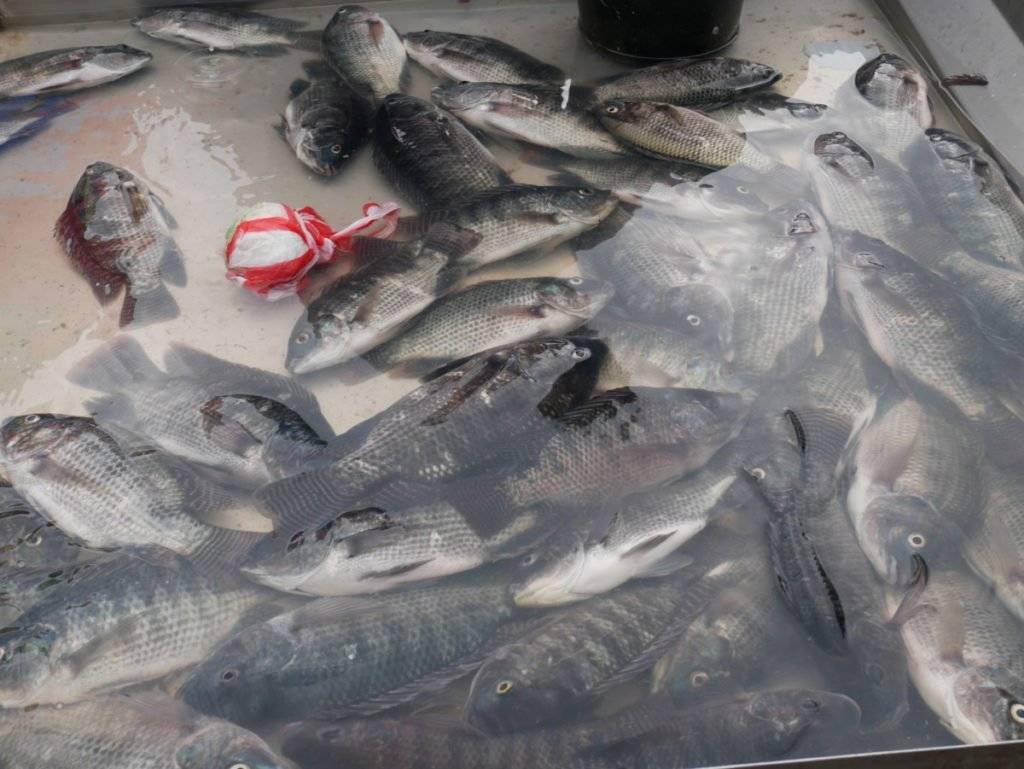
We moved on to another section of the market and we were looking for some "Pasalubong." The word Pasalubong means something to take home with you as a gift for loved ones during travelling. It could come as a form of food, clothing or souvenirs. What can I say we love giving stuff to our loved ones and it is the thought that always counts.
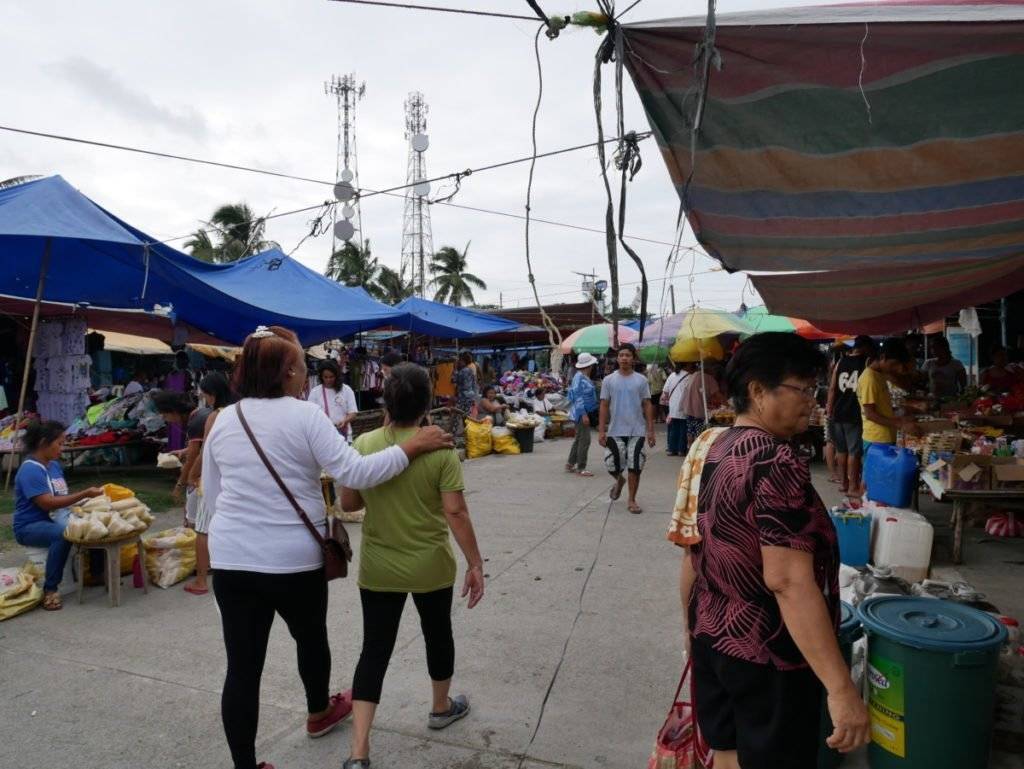
Steamed corn is also very common in our country. You could see vendors in almost all market places and you could sometimes even see them travelling on the road selling corn.
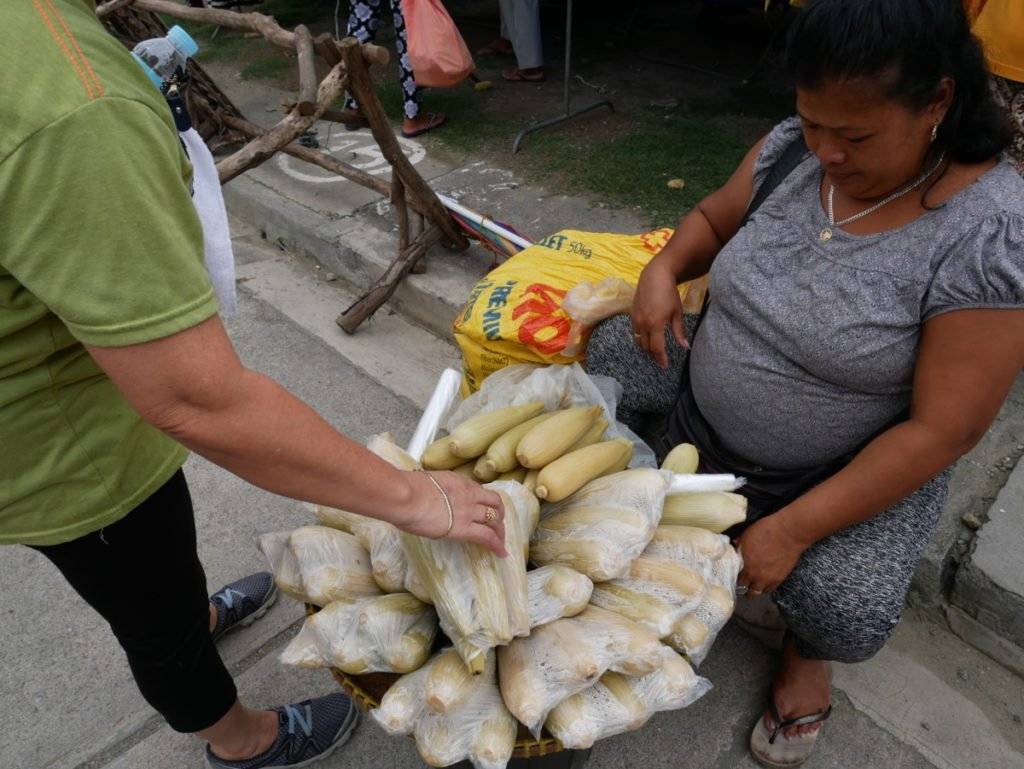
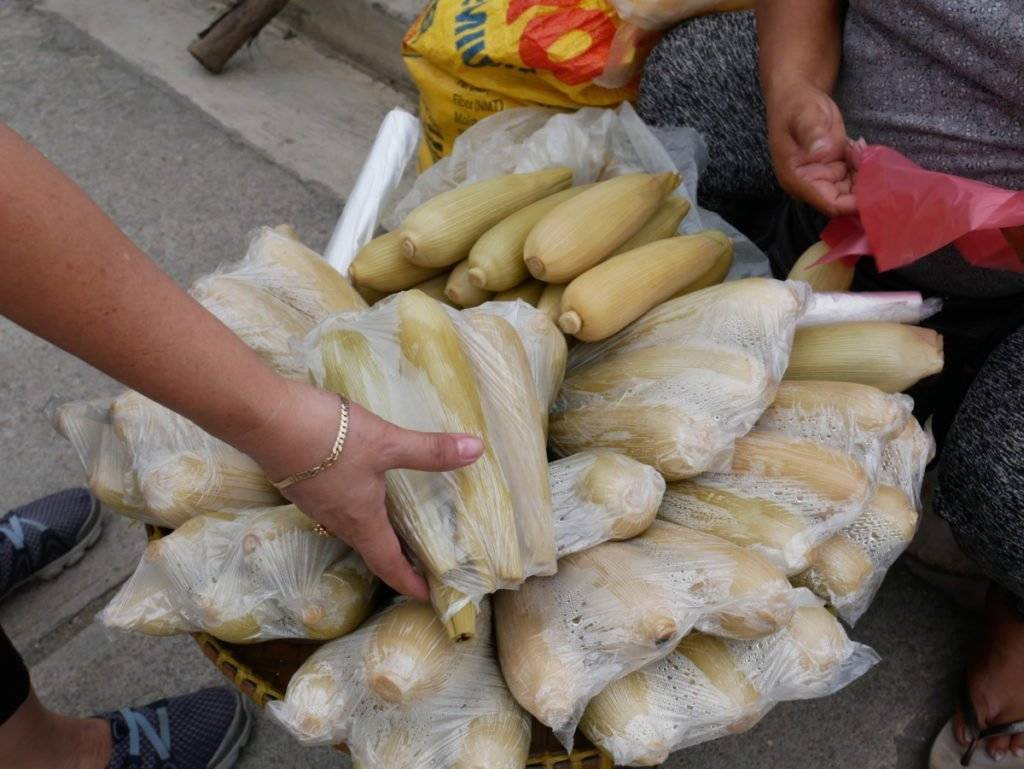
We found the area where they sell all sorts of Pasalubong. Vendors would be calling out to you and ask what you are looking for. It would be quite hard not to buy anything especially if you have a sweet tooth.
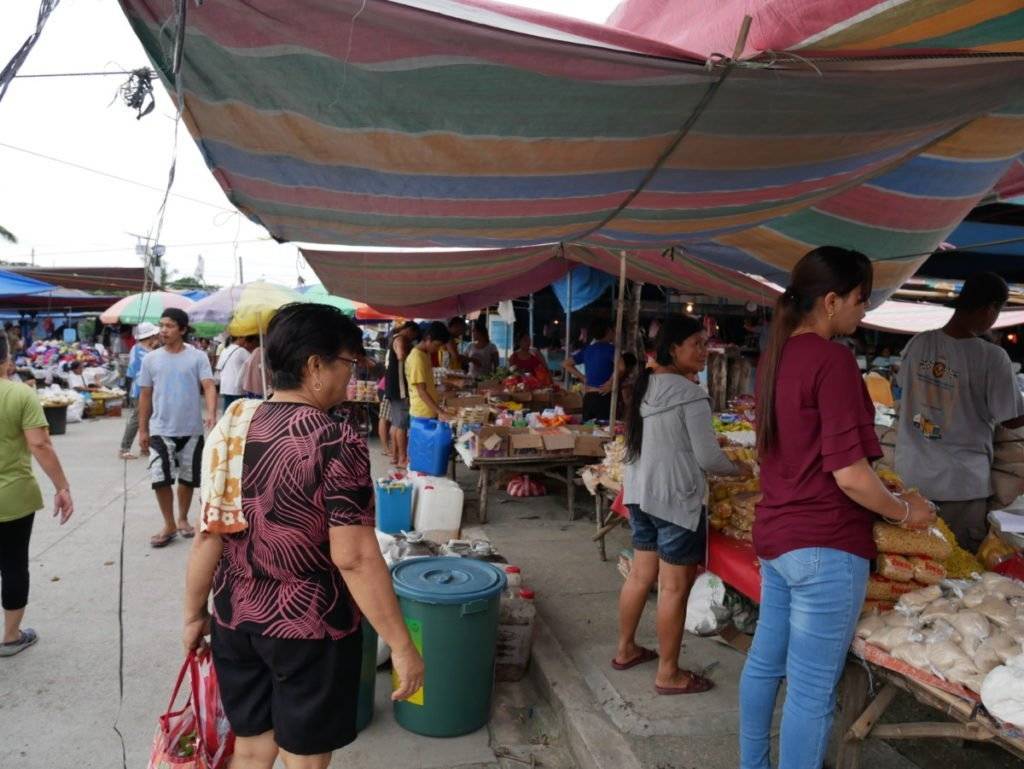
These are sweet tamarind packed in small plastic packets. It is made into a kind of candy that has a sweet, sour and salty taste.
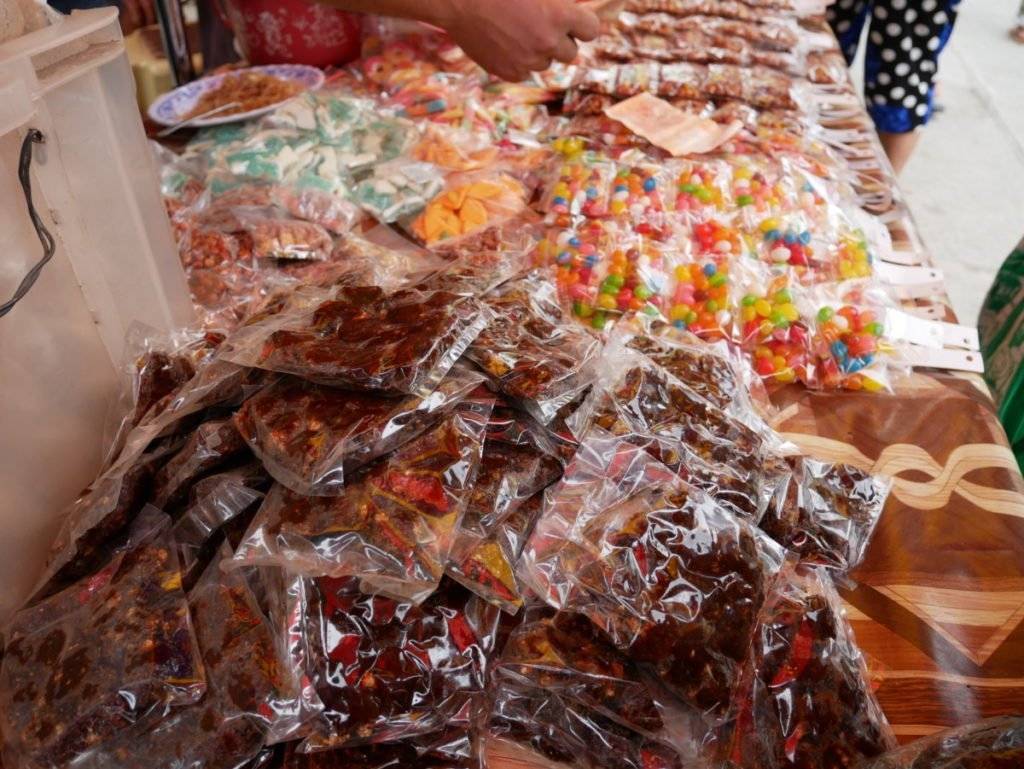
Looks like some sort of biscuit and I'm not sure what it is called. We have a lot of these kinds of biscuits in our country.
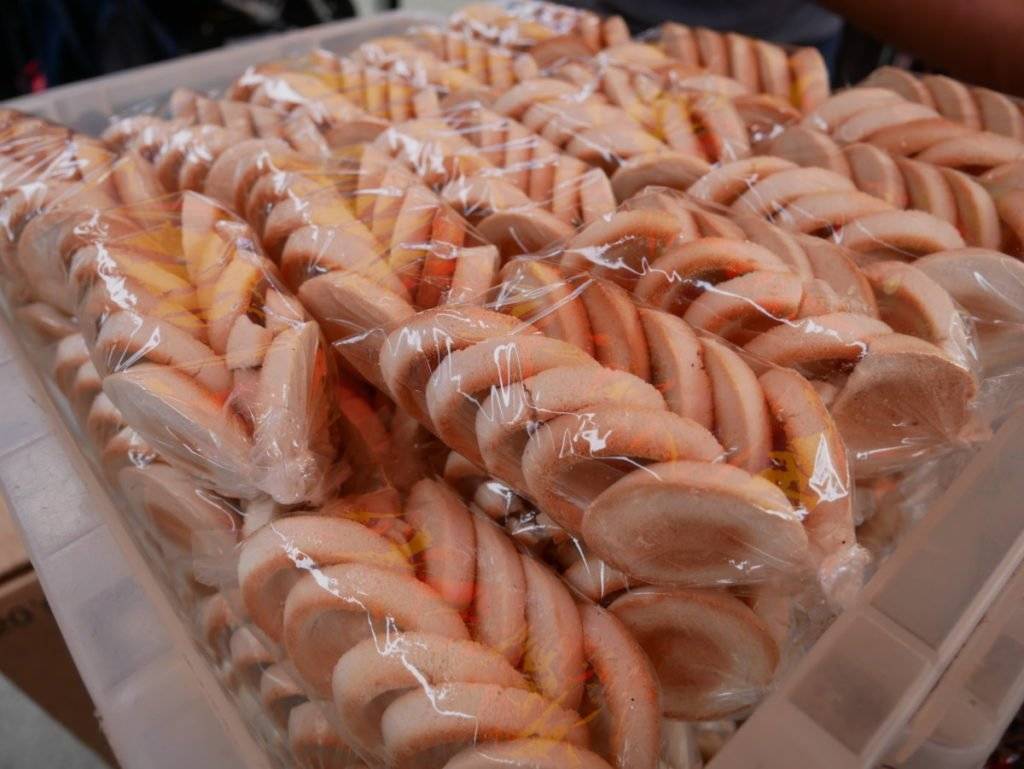
Peanuts for a quick snack anyone? The popular ones are salted and sugar coated peanuts.
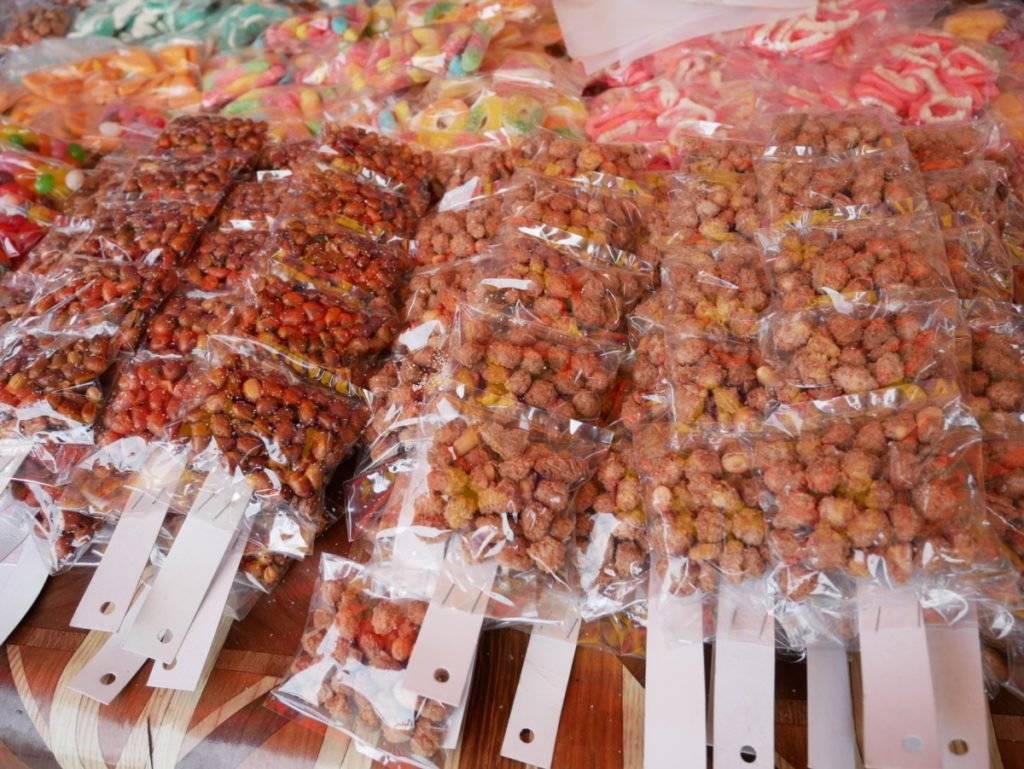
If you do not know what to buy, you could always ask what is the most popular produce in the region. Here in Bicol the "Pili Nut" is one of the popular pasalubong for your loved ones. The Pili Nut thrives in Southeast Asia and does not tolerate cold temperatures. The taste is similar to pumpkin seeds as some of the people describe it.
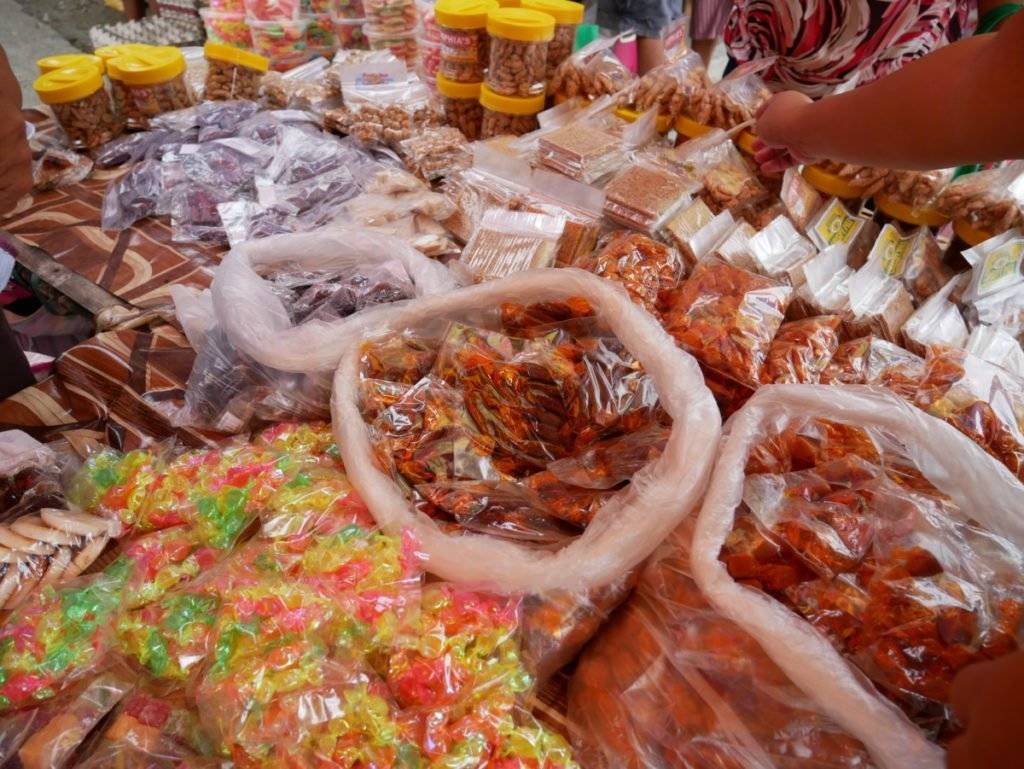
The nuts are made into candy like treats which are often roasted, salted and sugar coated.
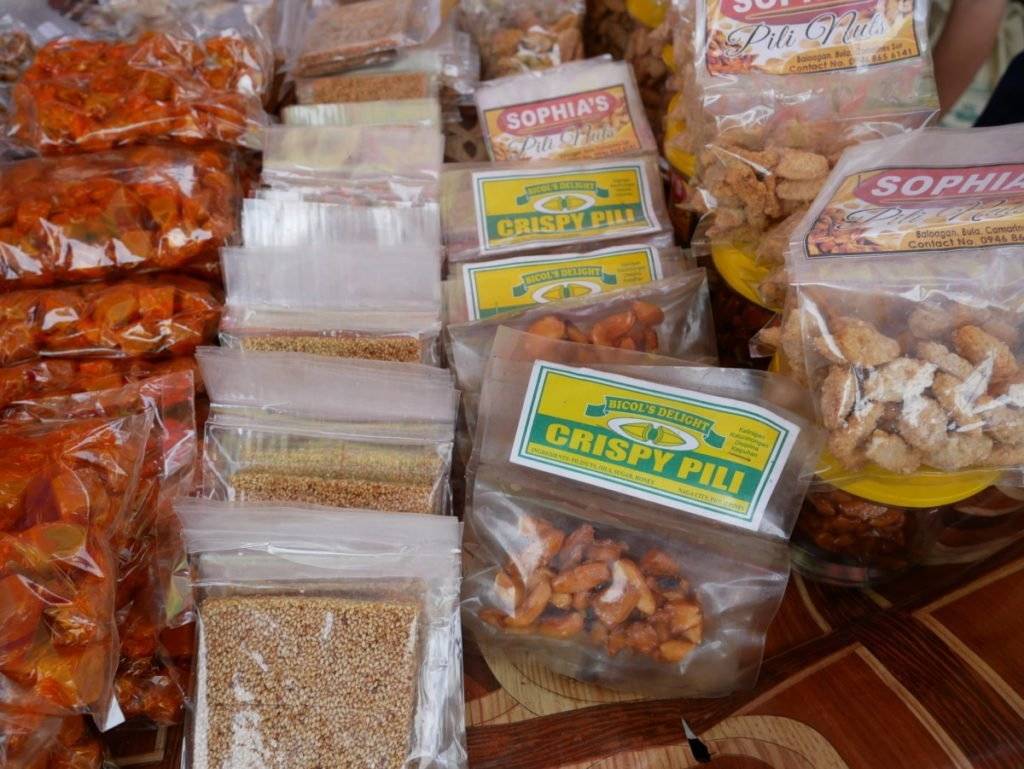
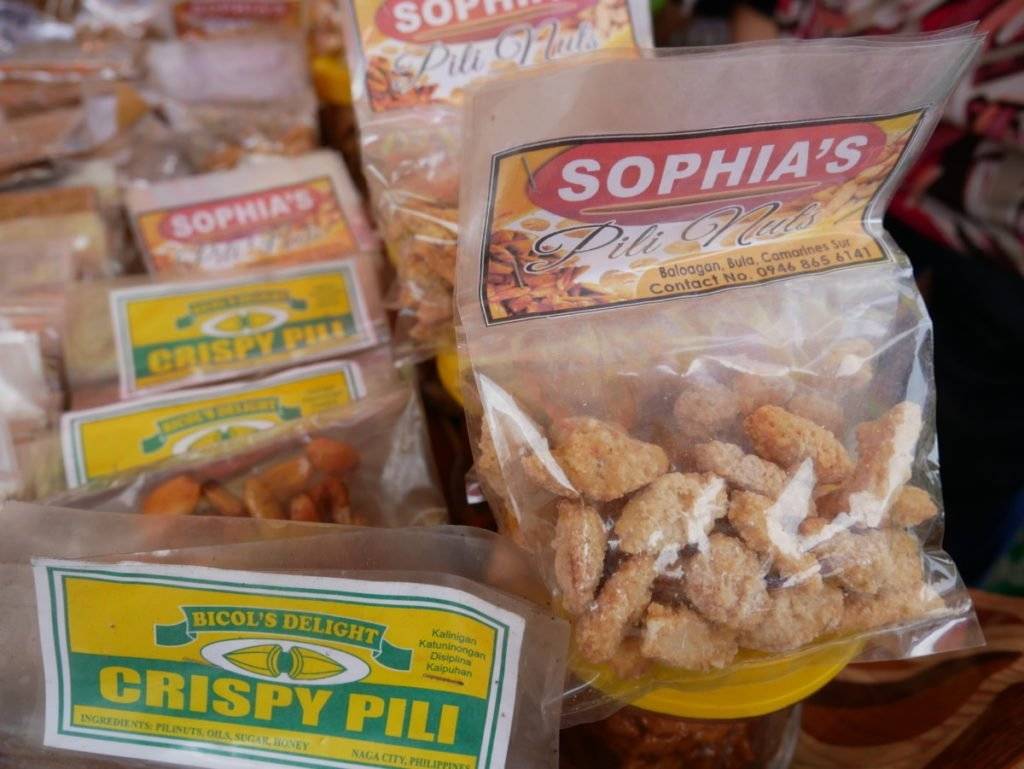
This looks like sesame seeds that have been coated with sugar.
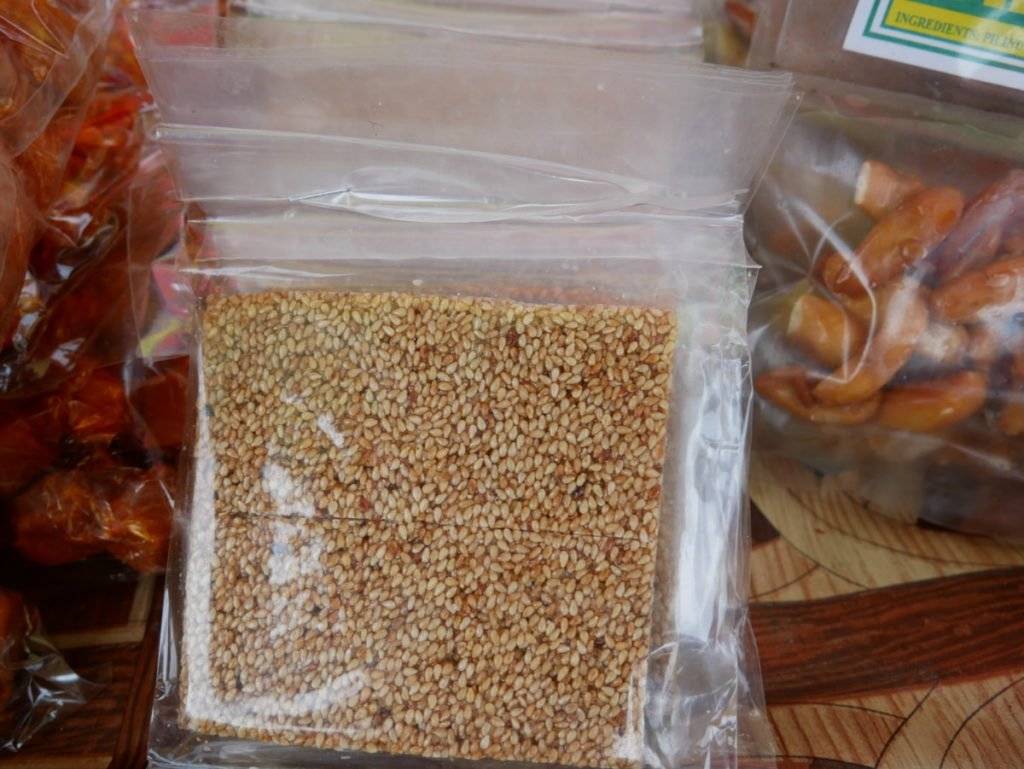
Other candies are wrapped with colored plastic wrappers to make it more attractive to children.
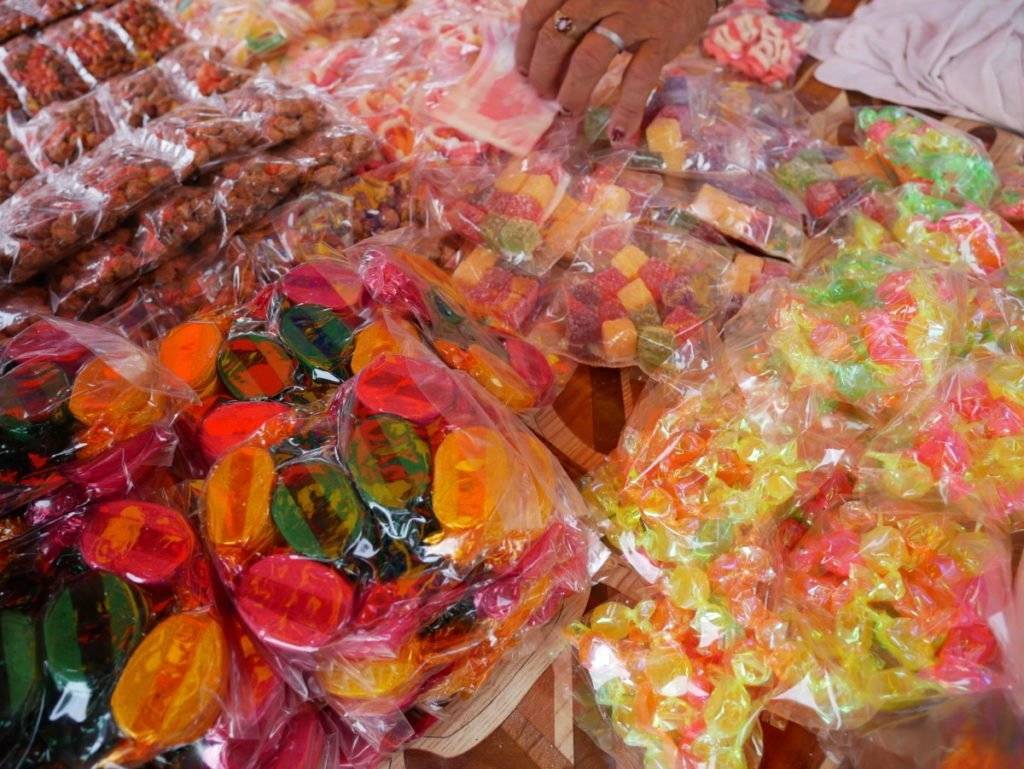
After going thru that sweet sweet area, we needed to buy some vegetables next.
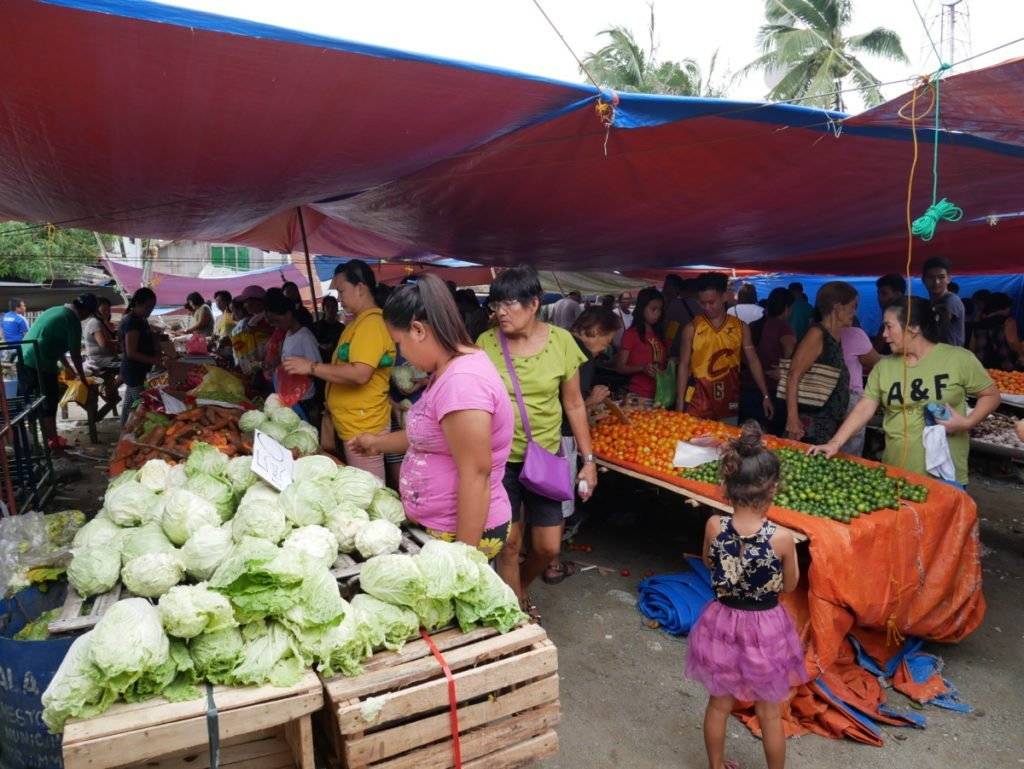
Cabbages for sale for 50 pesos per kilo which is roughly around $1 USD a kilo.
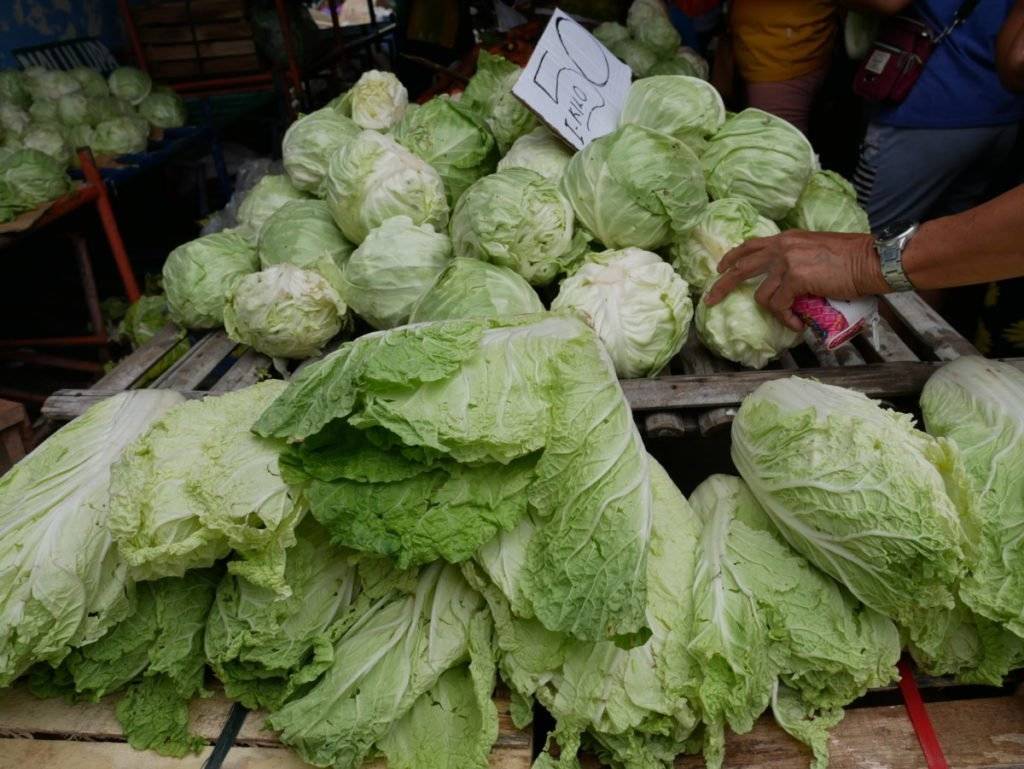
This is called the calamansi which is our local lime. Very sour and is often used to marinate meat, mixed with soy sauce as dipping and also made into a juice. Pretty much our version of the lime and you could do with it what you would do with lime. Prices are around 60 pesos per kilo which is like $1.15 in USD, but you could also buy 1/4 kilo.

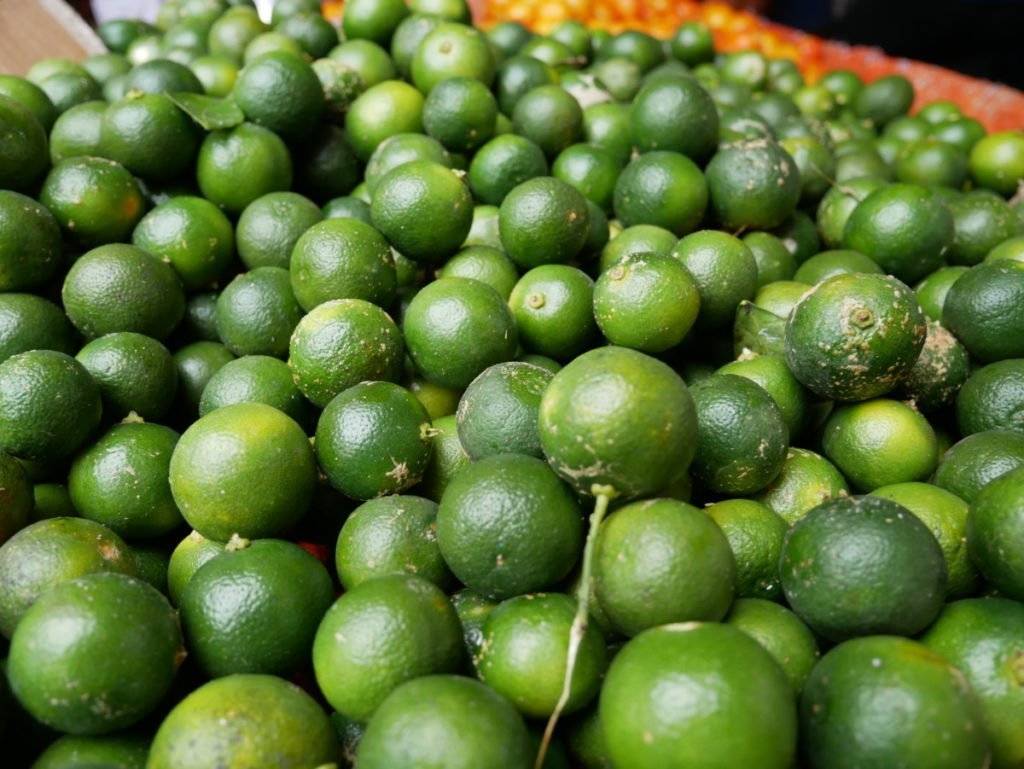
Ginger and tomatoes mixed together.
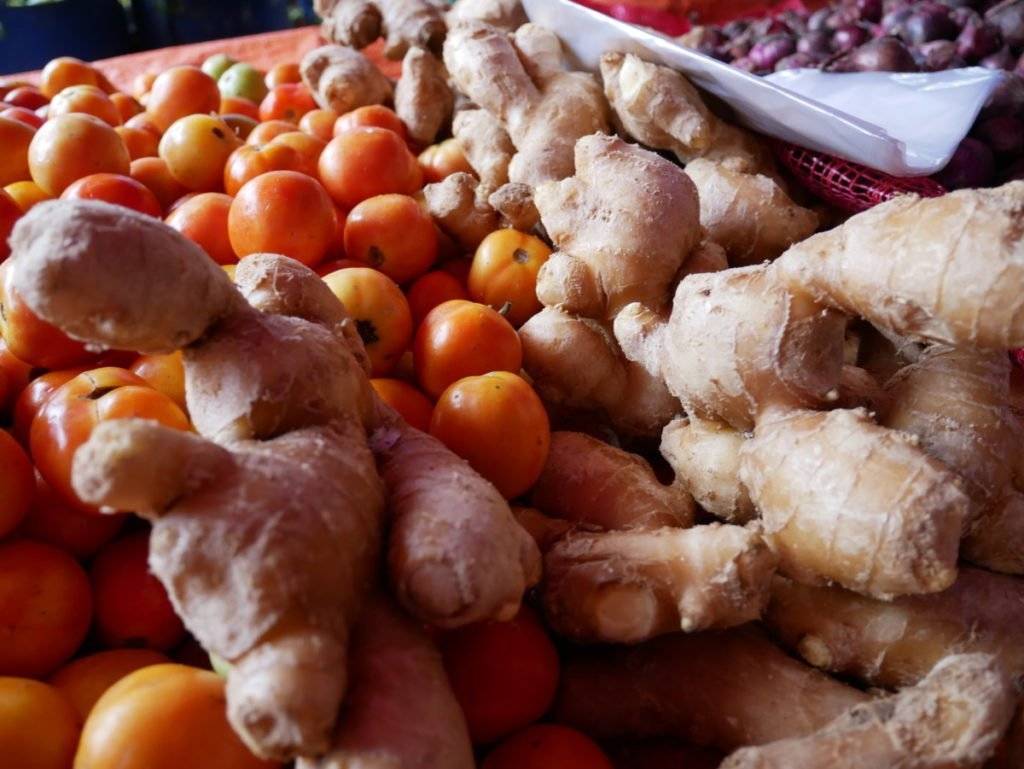
Red onions that has a sweeter taste than the regular onions. Very common and can be found in all markets here.
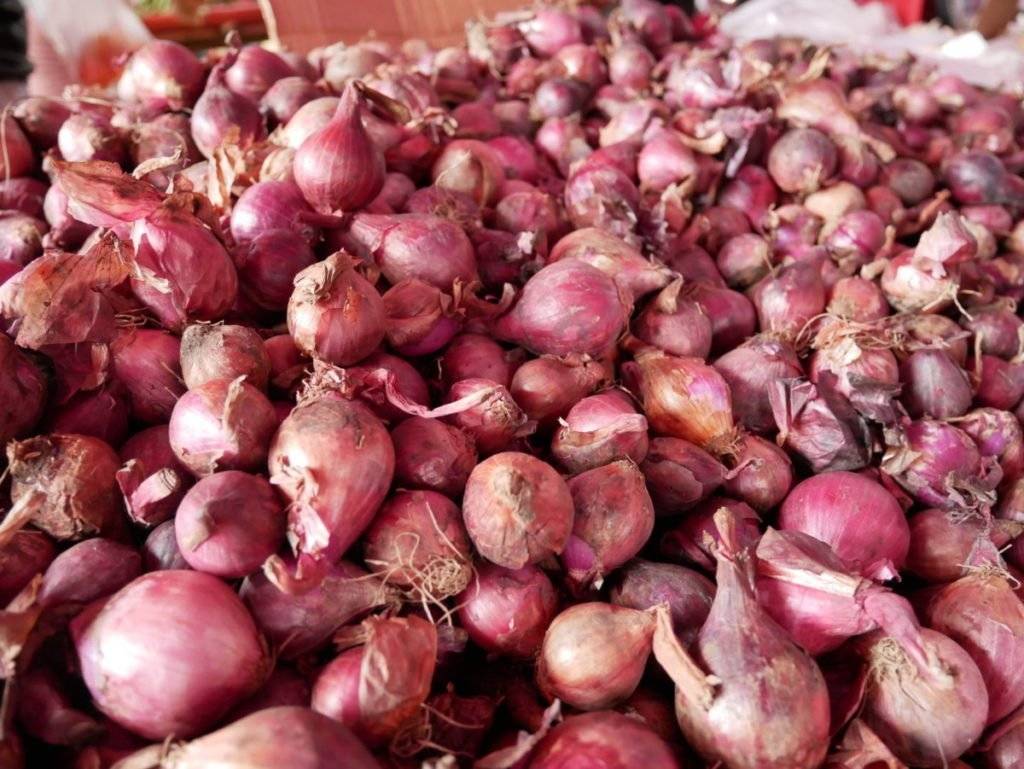
Different sorts of spices are sold in this stall like black pepper corn, bay leaf and looks like they mixed dried shrimp along with the spices.

One of the local favorites in our country is dried fish and there are so many varieties. So popular they are even exported to some parts of the globe.
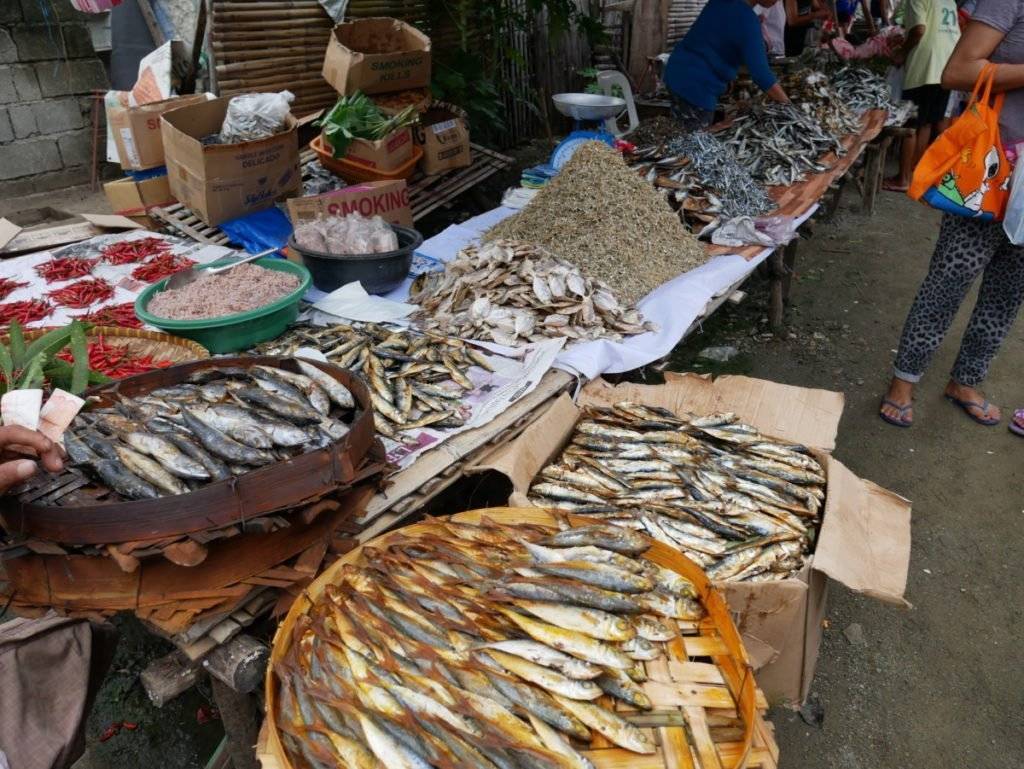
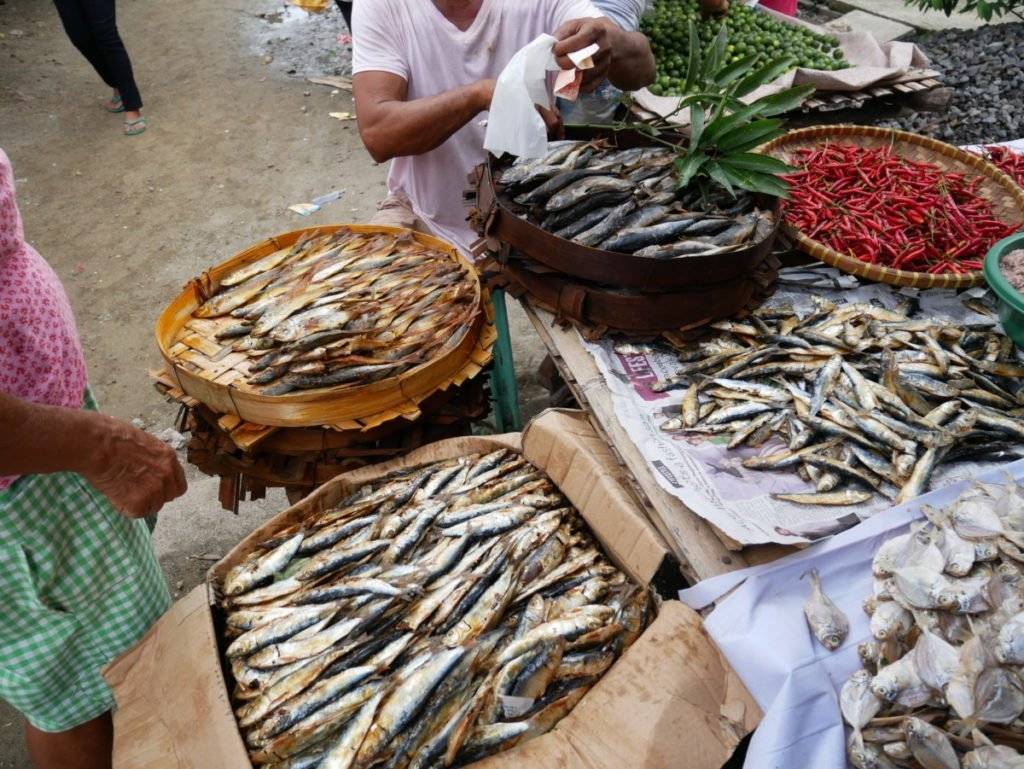
This is called the "Tinapa" which is smoked fish. This variety looks be made from sardine, but the popular fish used back at home is the milk fish.
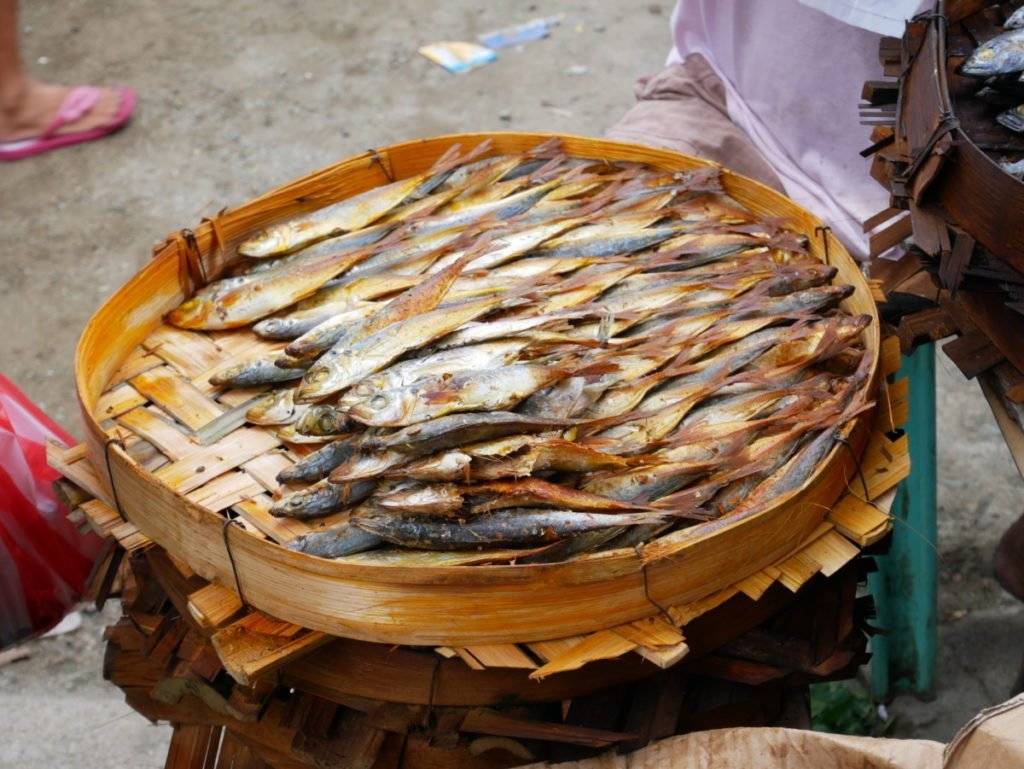
Our country is an archipelago surrounded by bodies of water which gives us access to a lot of marine life. Best way to preserve and store for a longer period of time is salting and drying the fish. Dried fish are very accessible almost anywhere in the country.
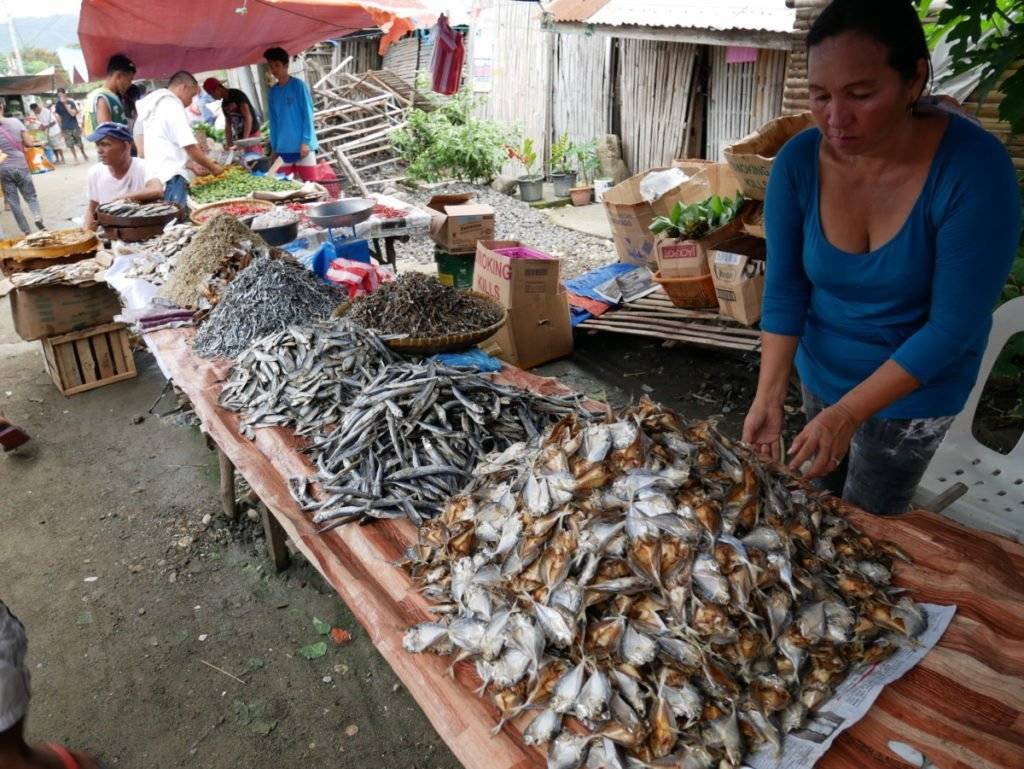
These are dried flying fish which we do not have back at home. We bought 1\4 kilo just to be able to taste it.
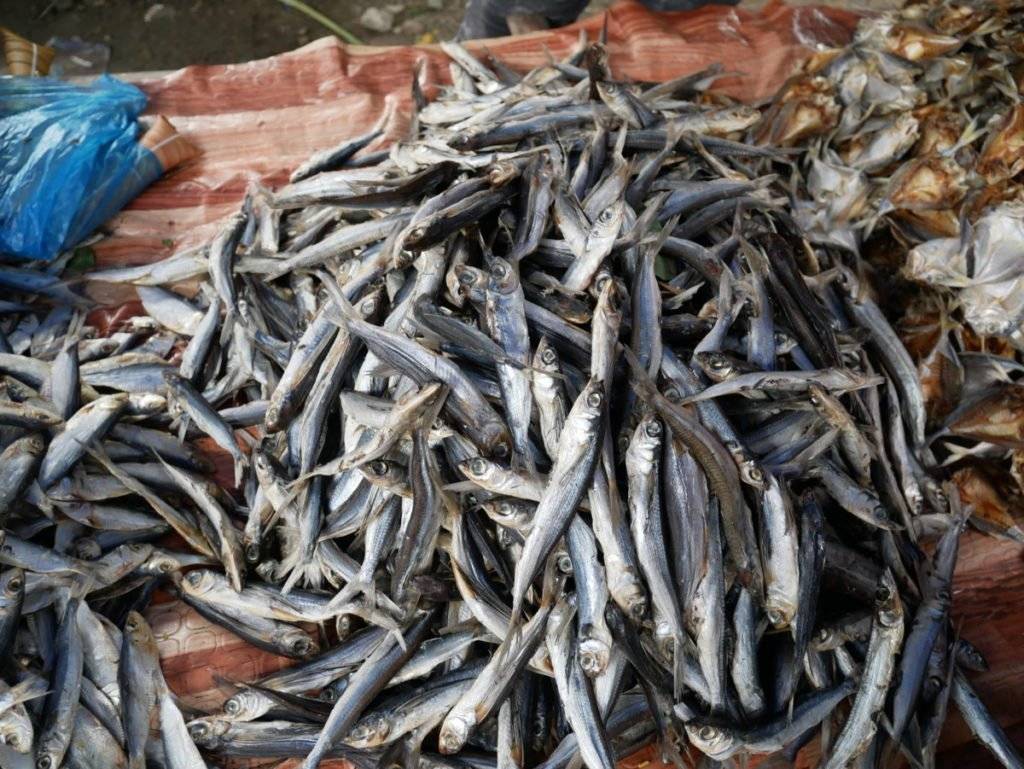
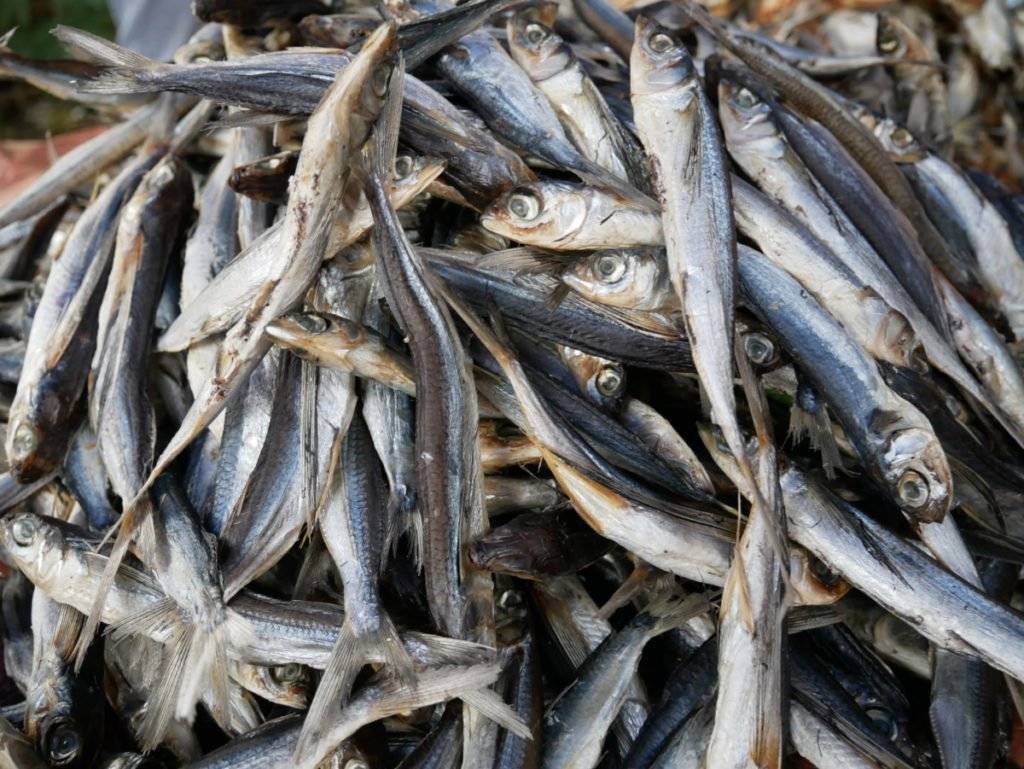
The king of all dried fish is the "Tuyo." A species of sardine which is very popular at the Philippine breakfast table. Best matched with garlic rice, salted eggs and sliced tomatoes. With vinegar as dipping, the best traditional way of eating this is by using your hands.
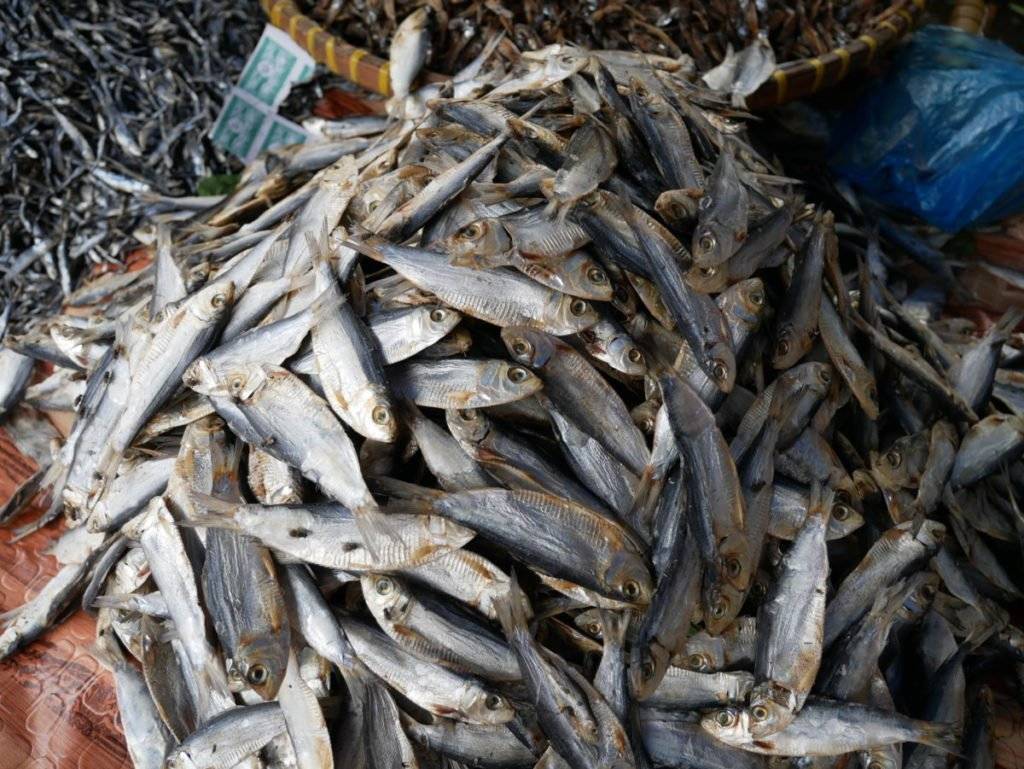
Another variety which I do not know what kind of fish is used. This is fried until crispy and best dipped is spicy vinegar.
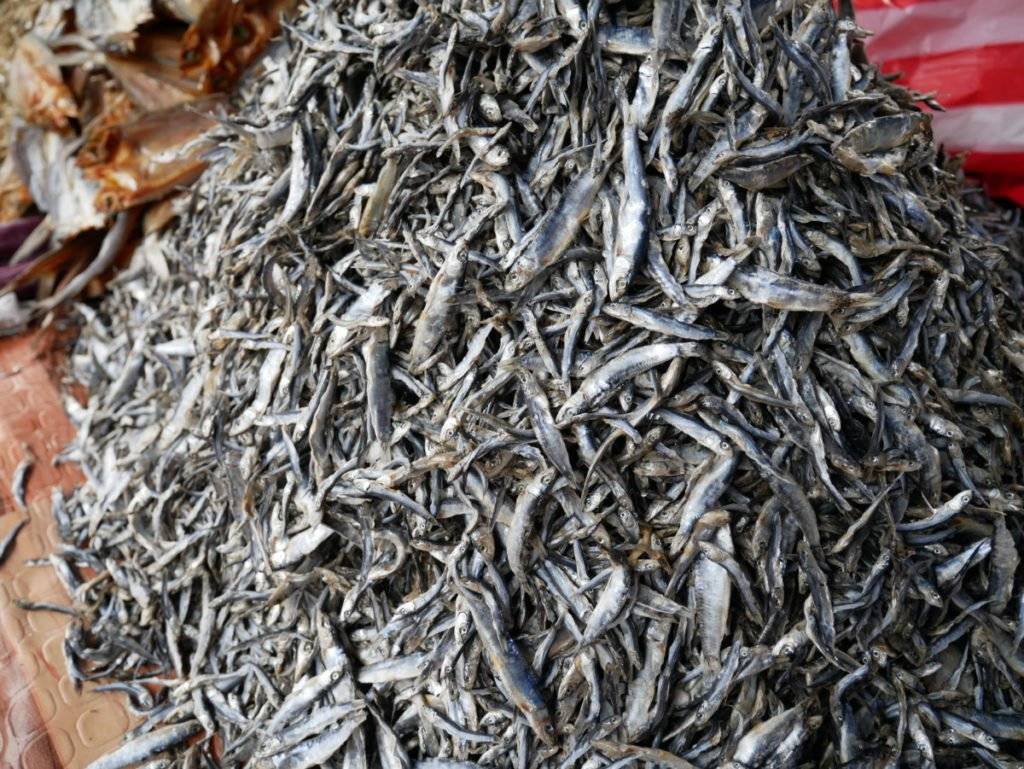
Fish that are butterflied are called "Daing." The bigger fish are processed this way and when I was young I always called them as the two headed fish. This type should not be fried to a crisp as it is best that the meat is still a bit soft. While some want it crispy, but it tends to taste bitter when over cooked.
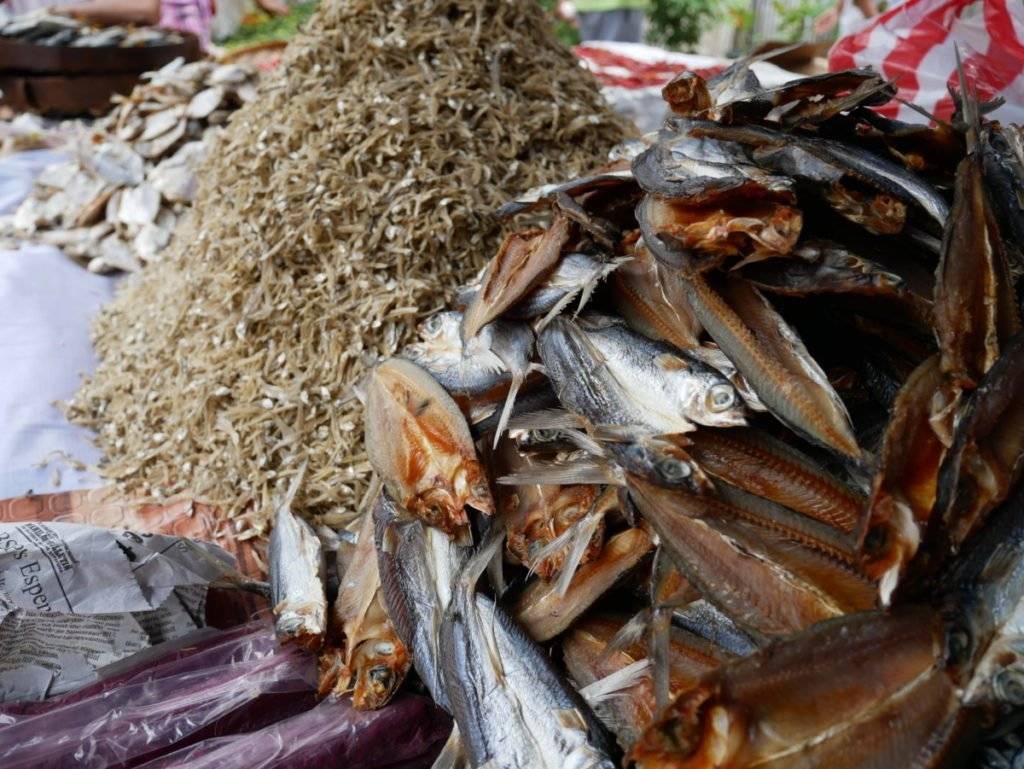
This fish is called the "Sap Sap" here in our country. It is often steamed or boiled but the dried ones also tastes great.

Just beside the Sap Sap is our Philippine anchovy called the "Dilis." Fried to a crisp, also spiced and sweetened for a tasty treat.
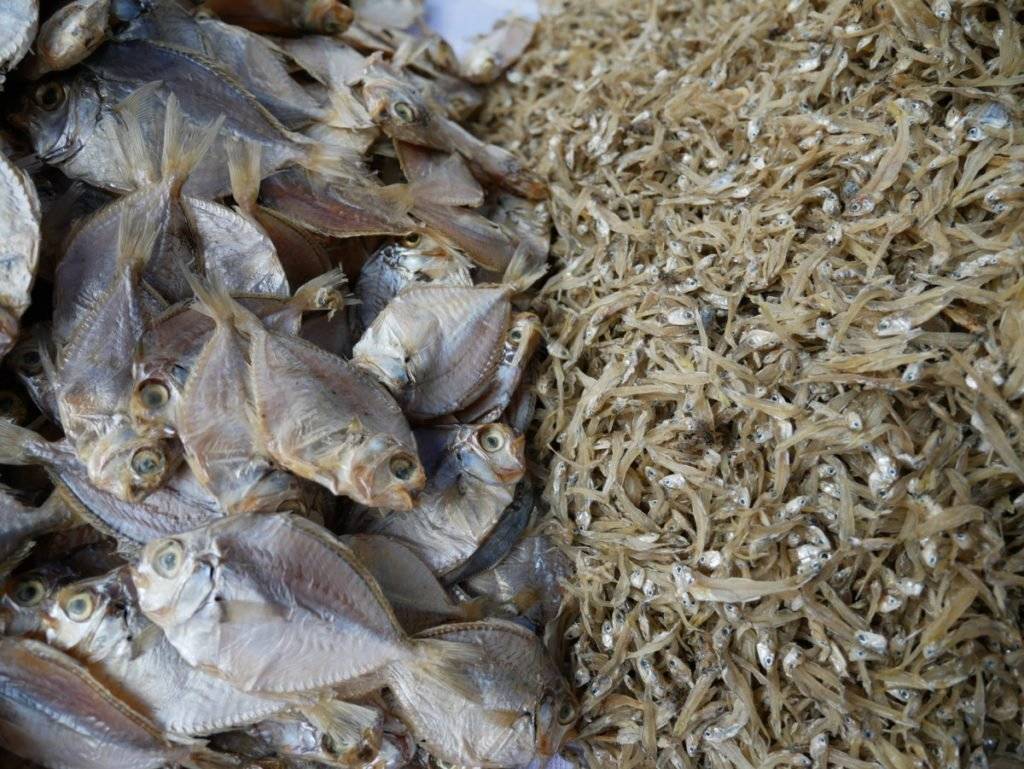
A bought a little bit of everything from this stall which will be a perfect breakfast for days to come. A warning though if ever you would be cooking dried fish, you would need to fry it in a well ventilated area as the odor could be quite unpleasant to some.
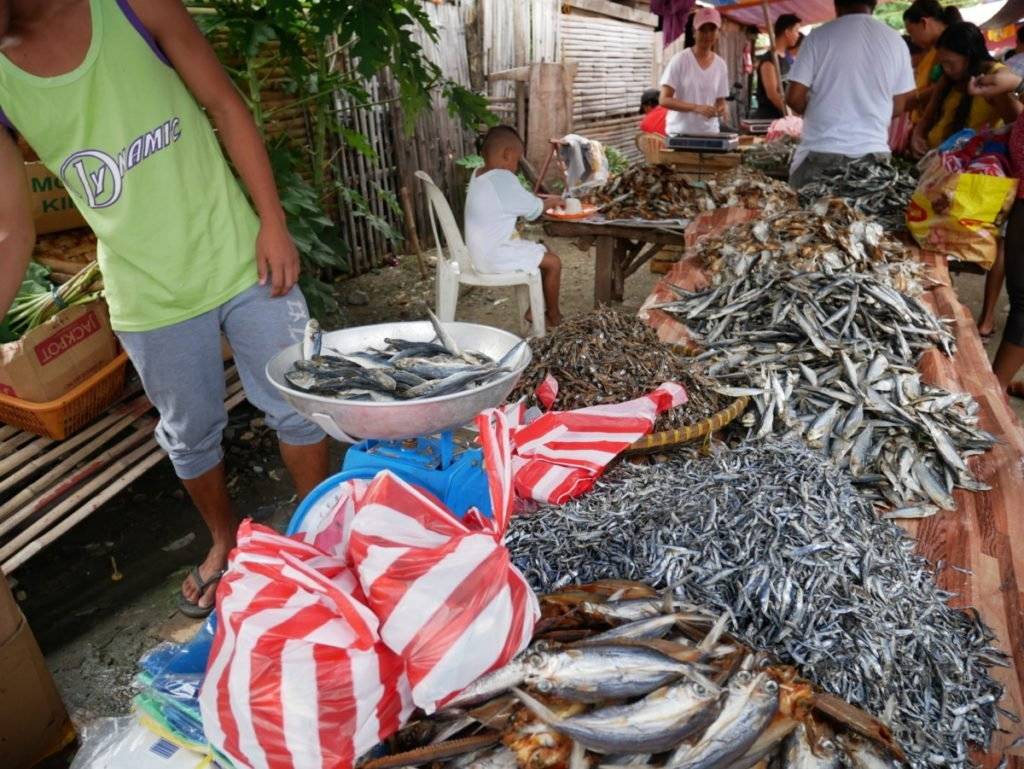
After that dried fish shopping, we explored more of the market place.
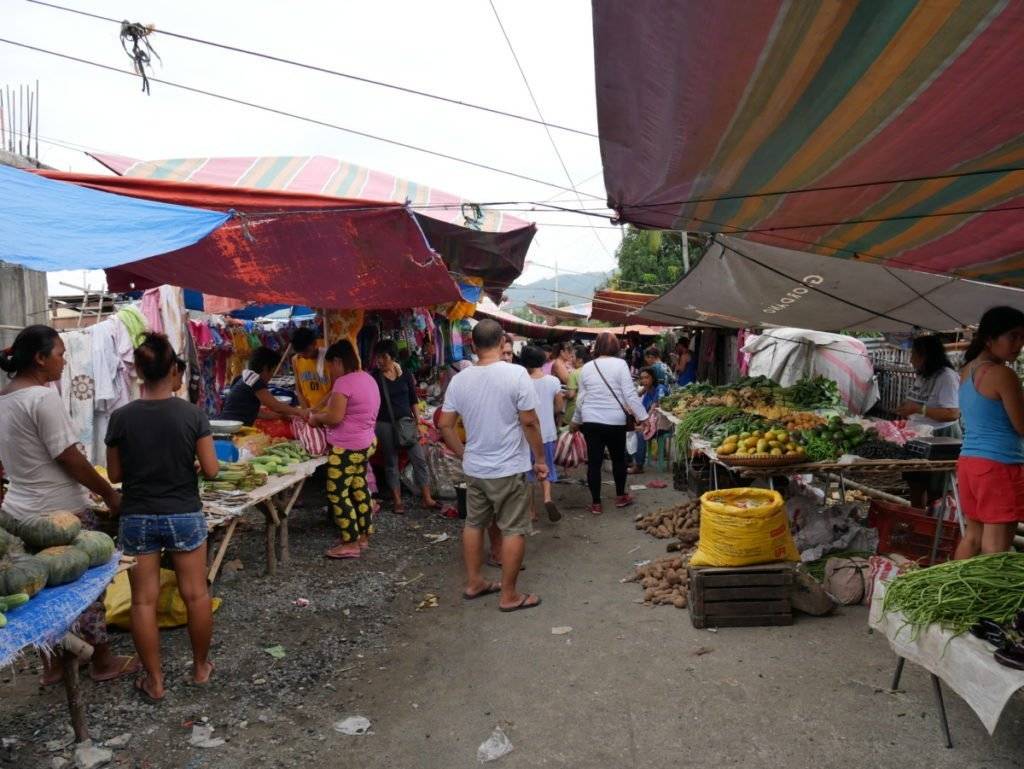
My mother in law was looking for bananas and you could always find them anywhere. Along roads you could sometimes find banana trees with fruits. If it does not belong to anyone you could just get some from the tree as they thrive everywhere in our country.
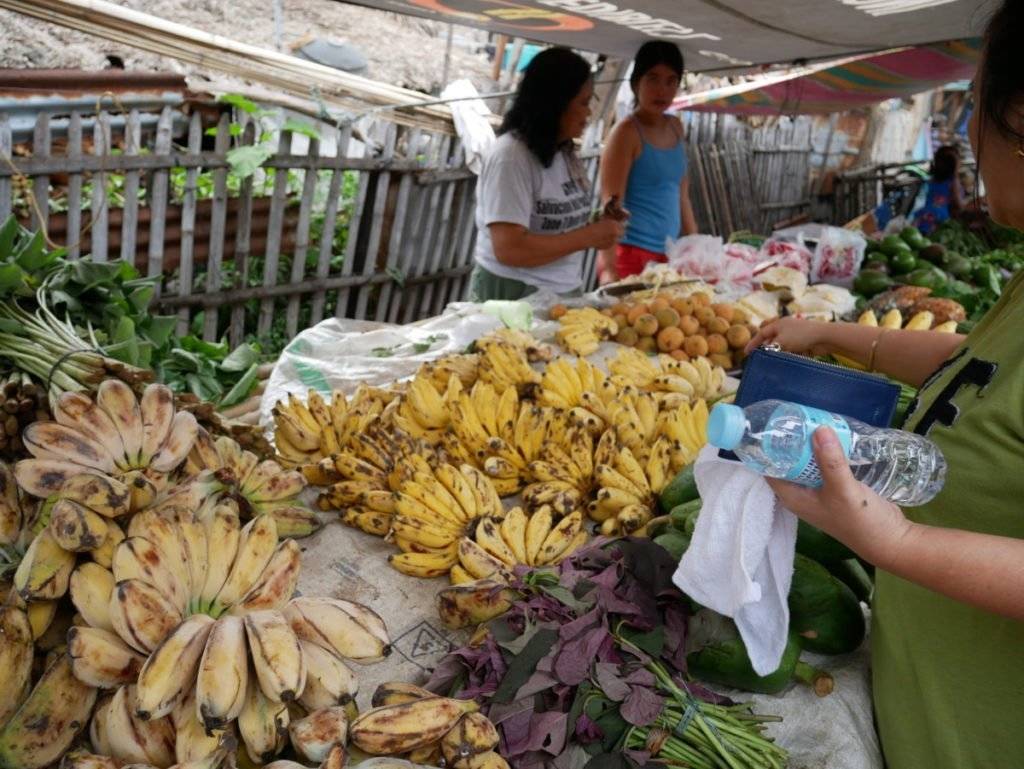
This species is called the "Saba." Often used for cooking it can be eaten as it is, but I do not know anyone who eats with out being cooked. Made into a dessert by mixing with sweetener, milk and crushed ice. There are so many recipes for this banana and the possibilities are endless.
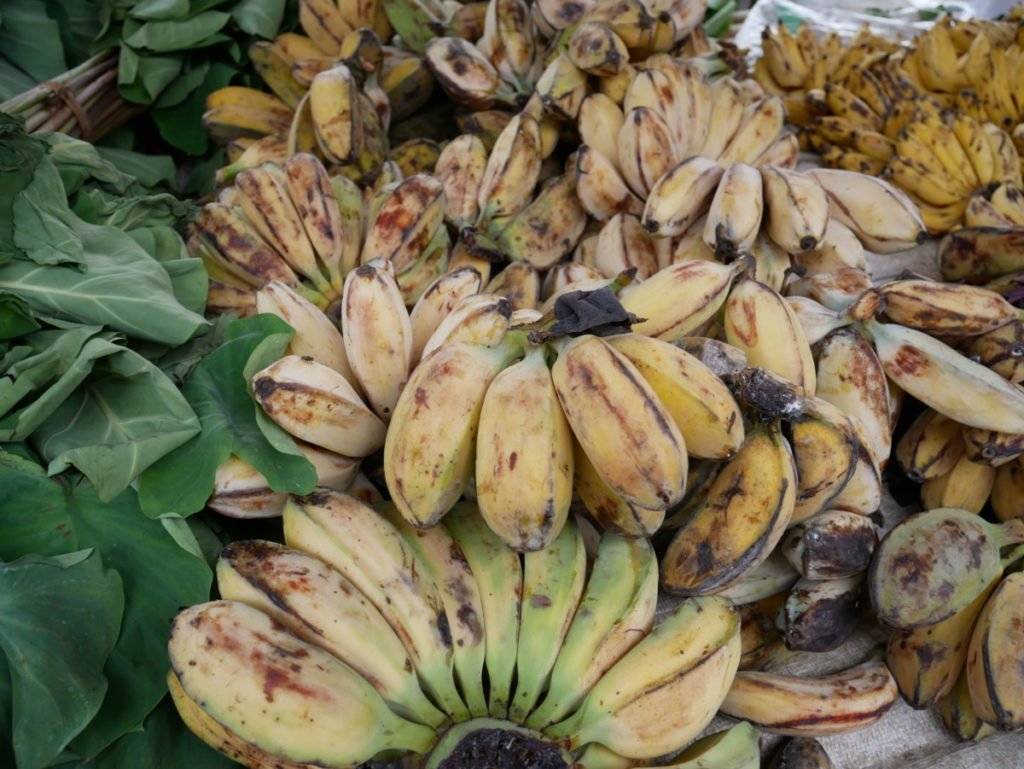
This banana is called the "Tundan." The banana that everyone loves and could be bought around 30 pesos per cluster which is around $0.58 USD.
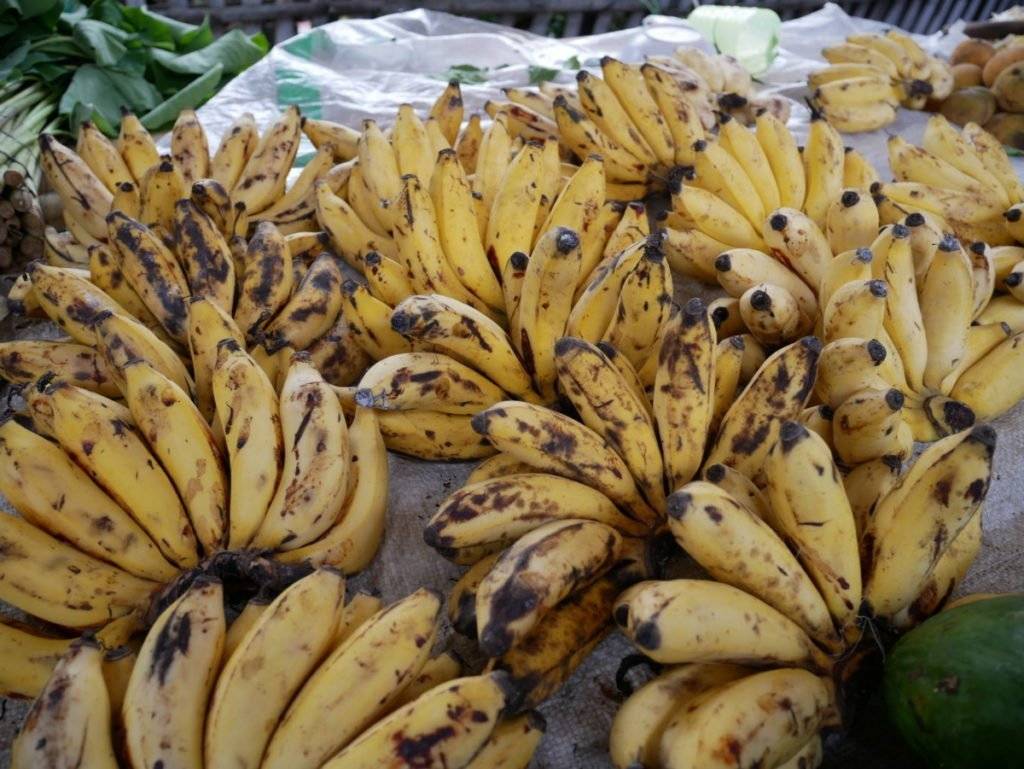
More fruits and vegetables along this area. Veggie lovers would have a fun time shopping for vegetables here.
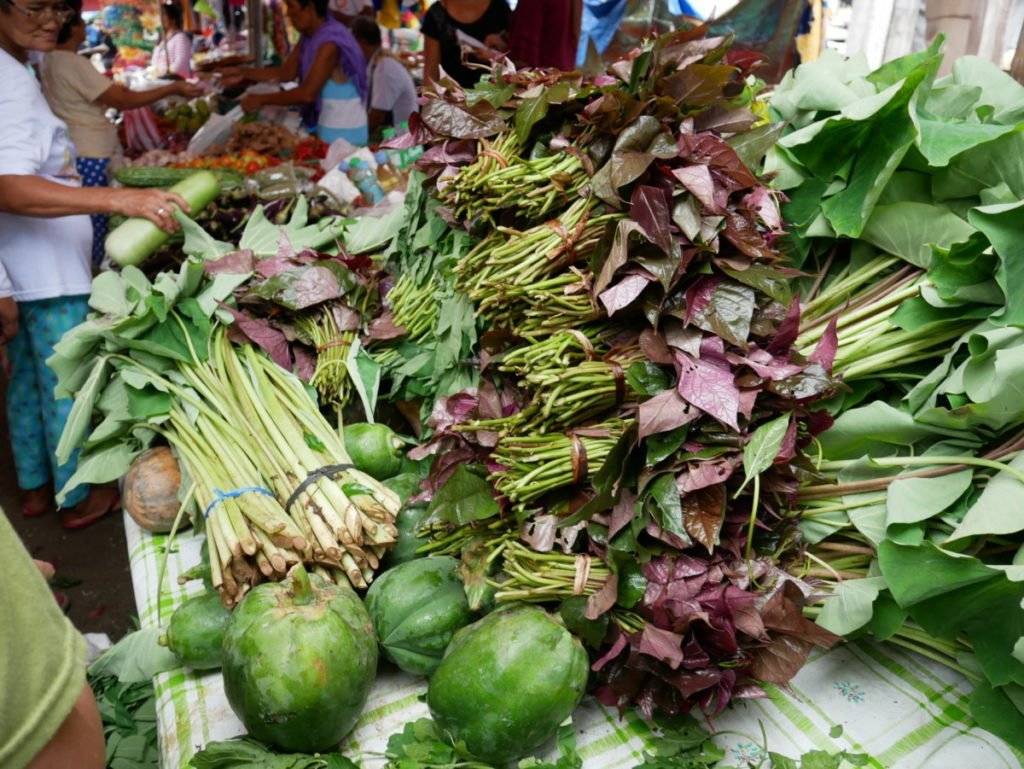
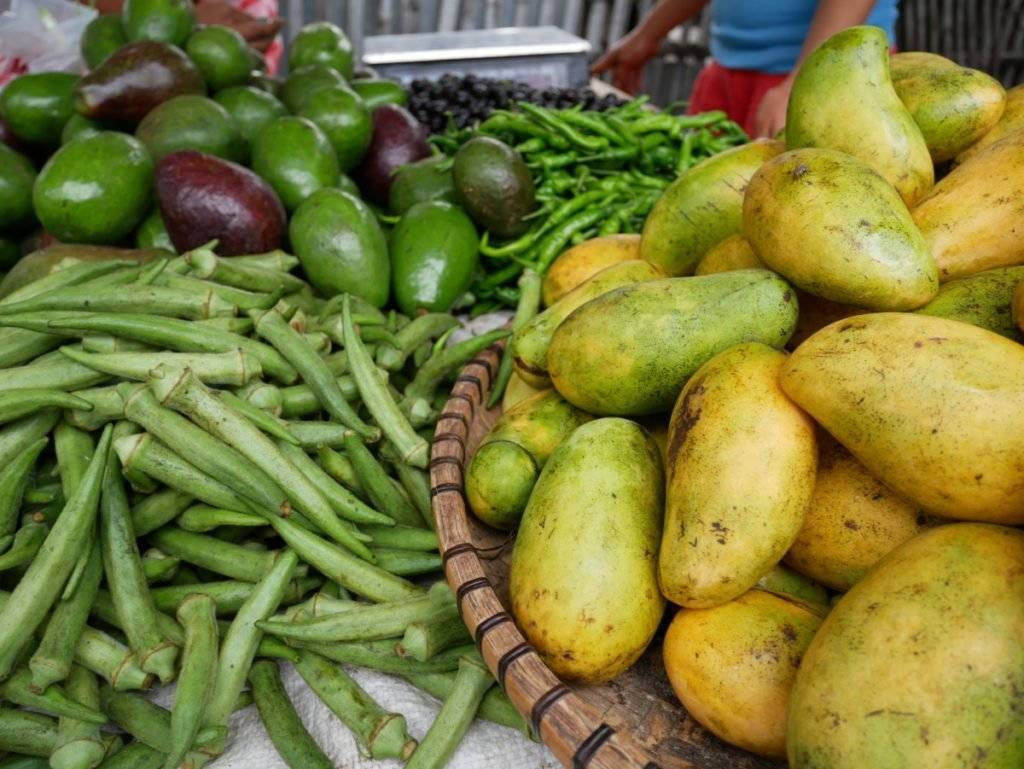
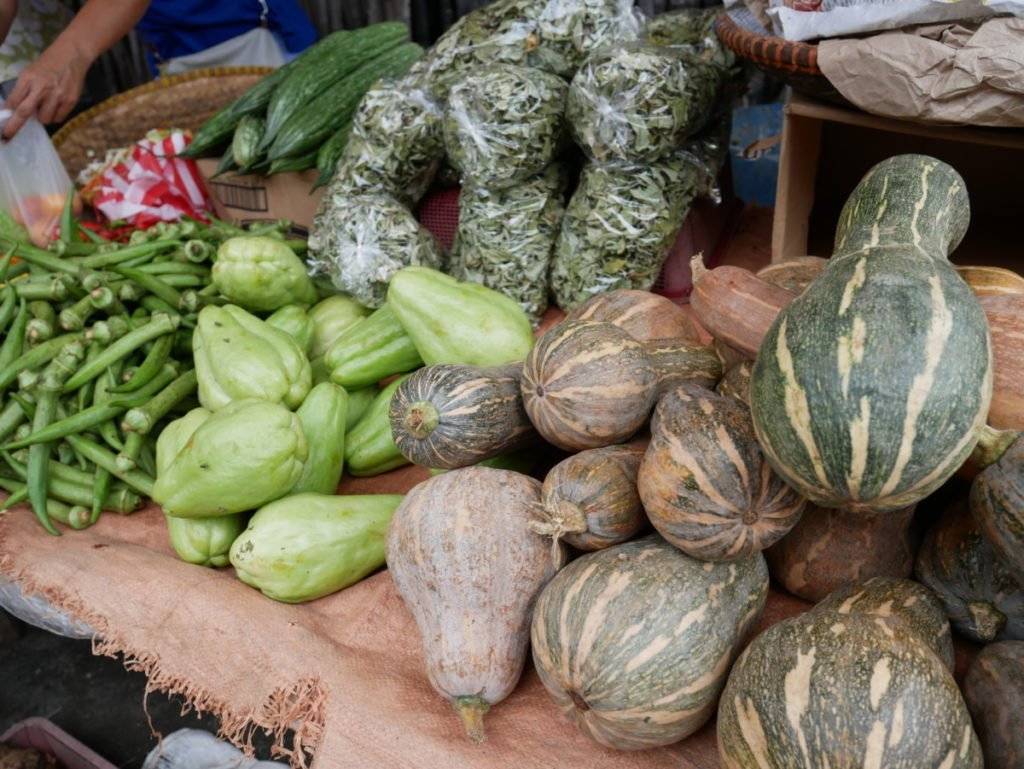
An unusual looking squash as the ones the I am accustomed to are the round ones. I do not see this variety at back at home.
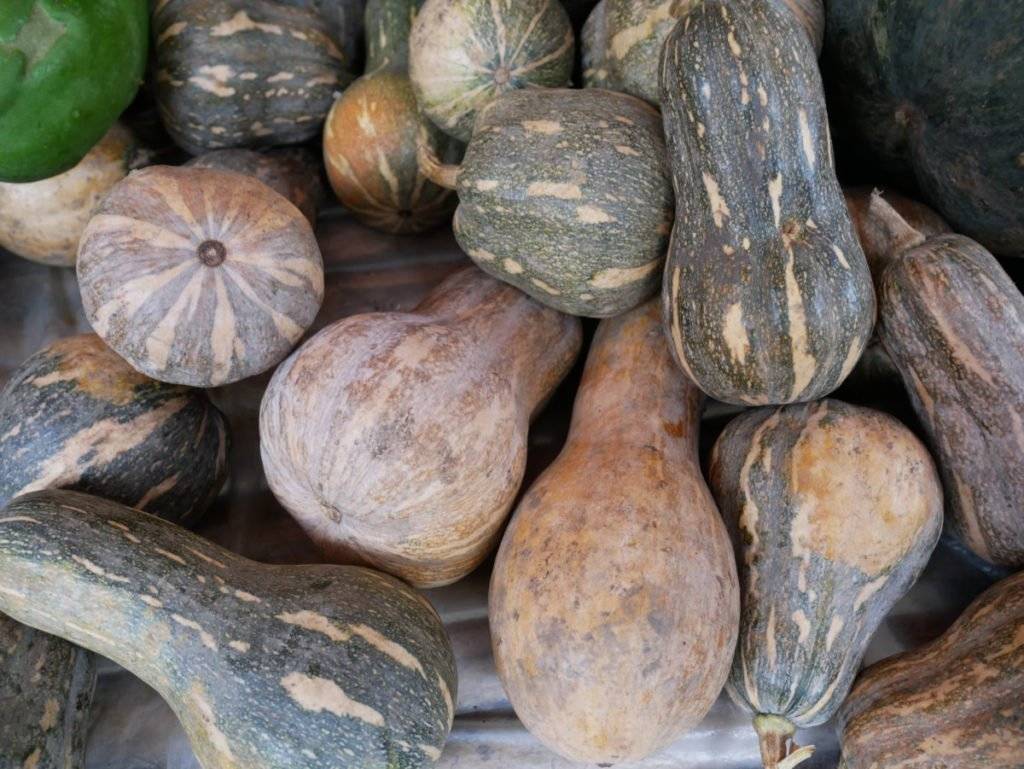
Sweet potato and cassava can be found here. What could you prepare with these ingredients?
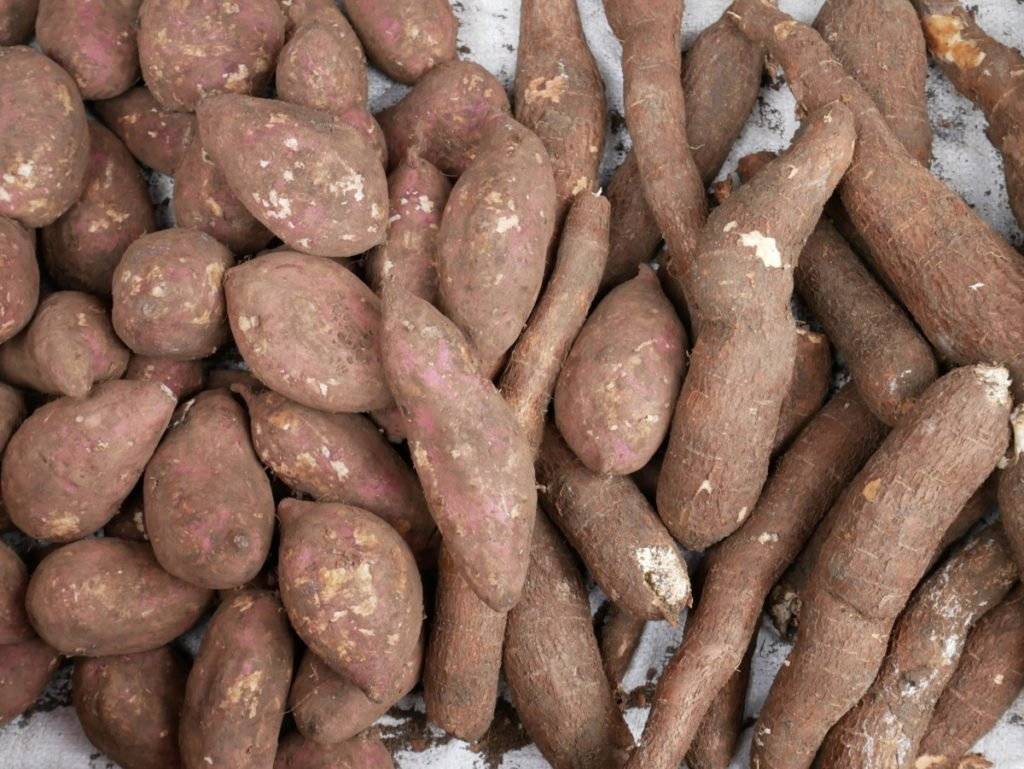
Now everyone knows the avocado, but not everyone likes them. They contain a lot of vitamins, high in fat and has a lot of health benefits. Here it is a great dessert, mixed with milk and sugar, made into ice popsicle and is a great flavor for ice cream.
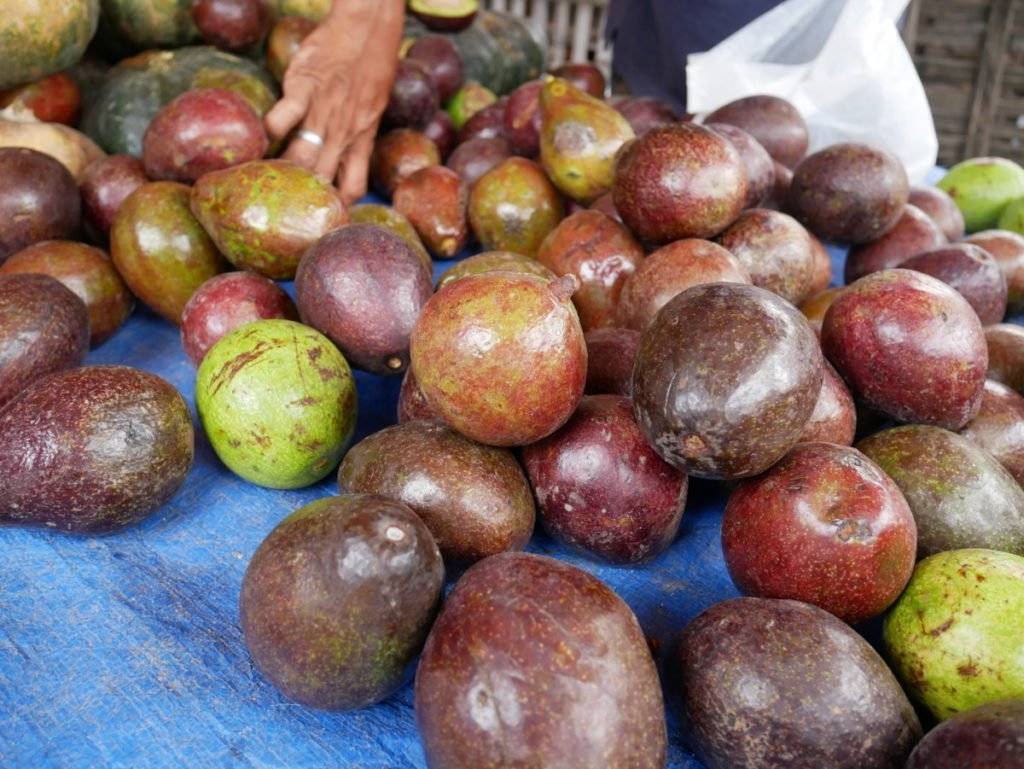

Bicol region is also know for their love for chili and spicy food. There will never be a shortage of chili here as I was told almost every resident has a chili plant in their back yard.
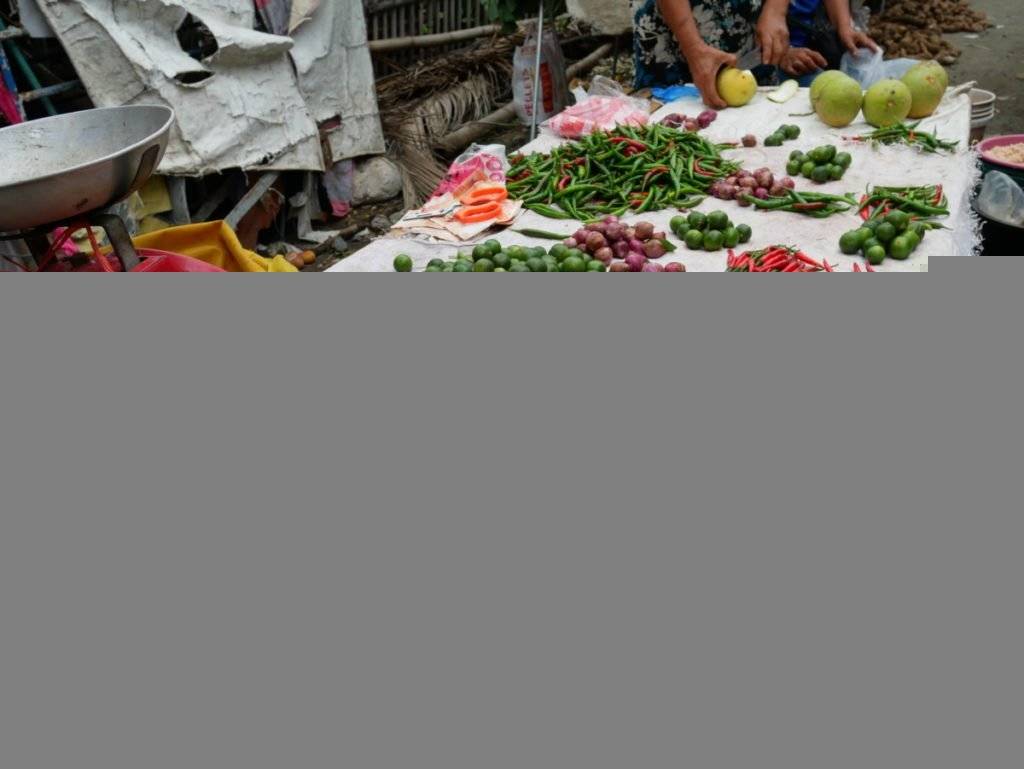
I tried asking what are these leaves for, but in this region they have a different dialect. A lot knows the main dialect that we speak, but there are some who knows only a few words.
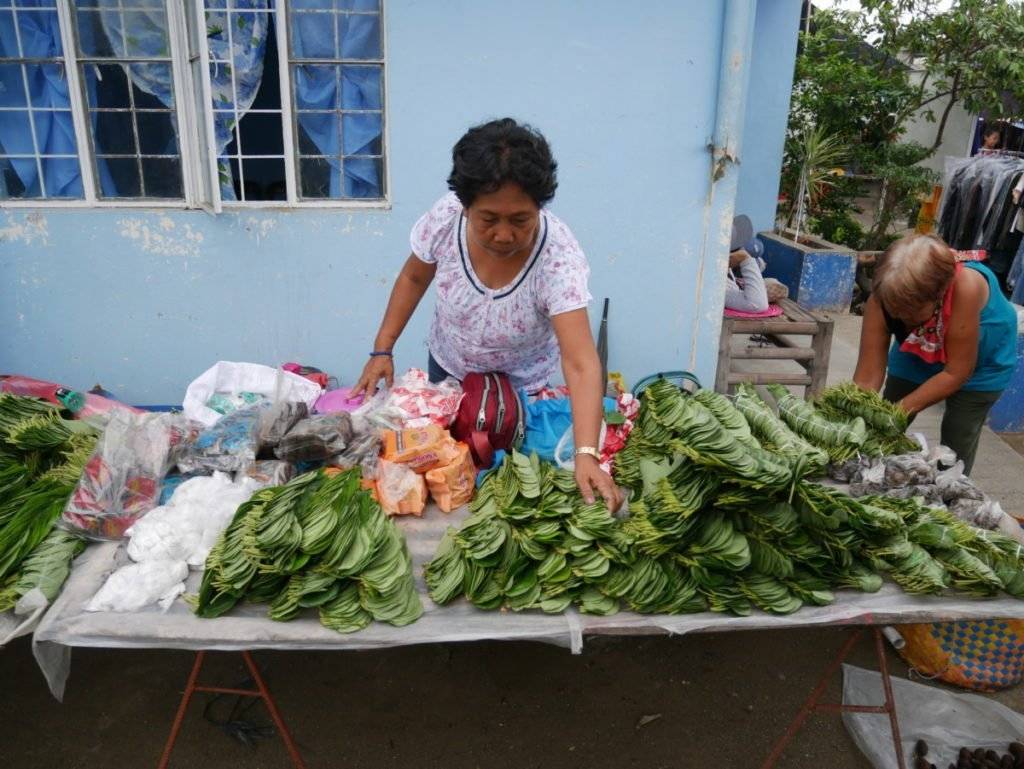
These are flaked dried cassava and my mother in law told me that these are fried. Once crispy they are like vegetable cracklings and the color just adds to the fun of eating it.

At the market, there are other goods for sale like this mat which is called "Banig" locally. Back in the days they just used these types of mat to sleep on. My grandma used to tell me that it is very cool to sleep on these mats as it doesn't warm up the body like the usual bed mattress.
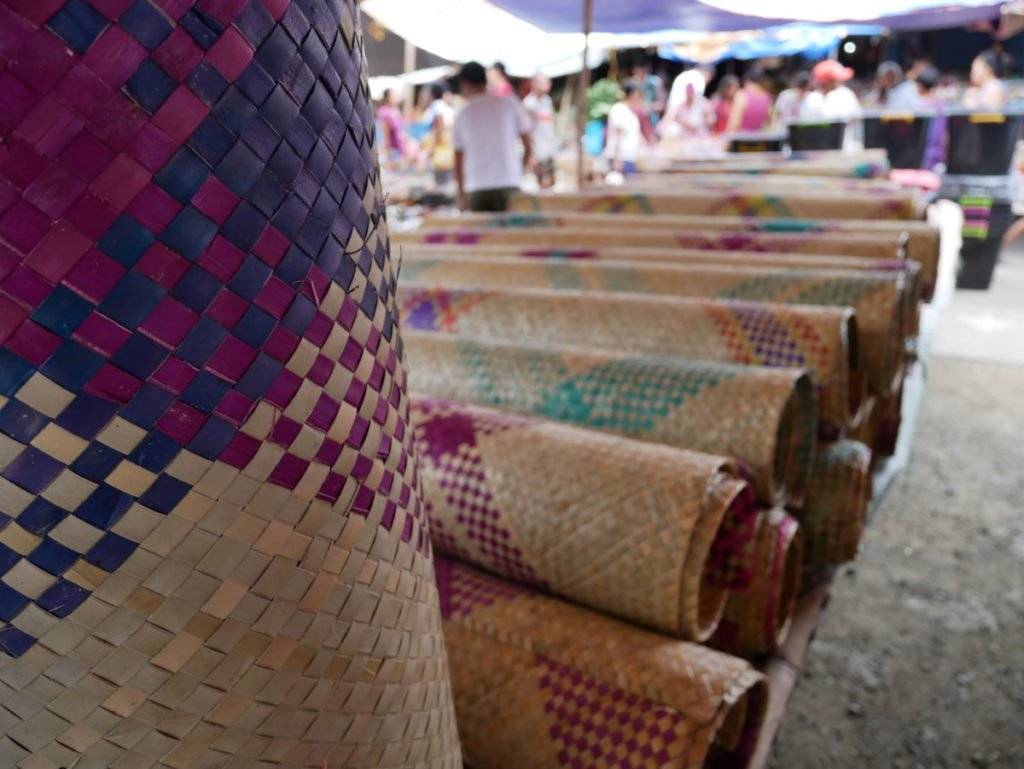
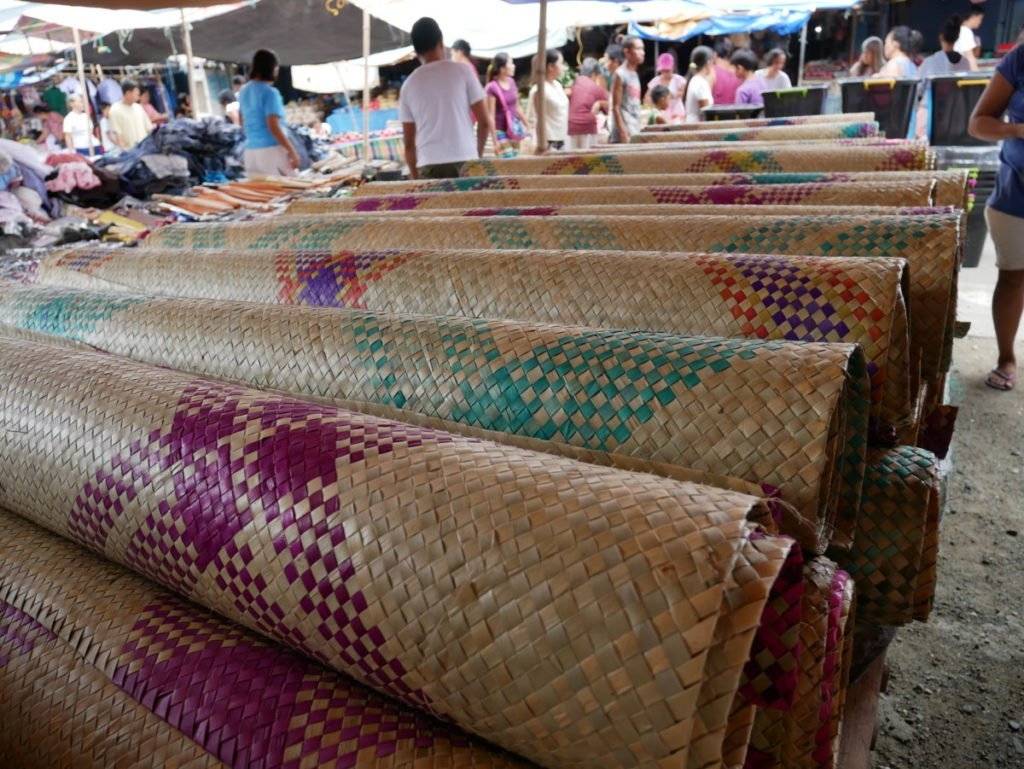
Hand made brooms called "Walis Tambo." These are made from Tiger grass and can be found in all Philippine homes.

Other small items are also sold on stalls. Little things like thread, brushes, ointments and even glue. Let's just say it's like a small stall where you could find little things that we usually use.
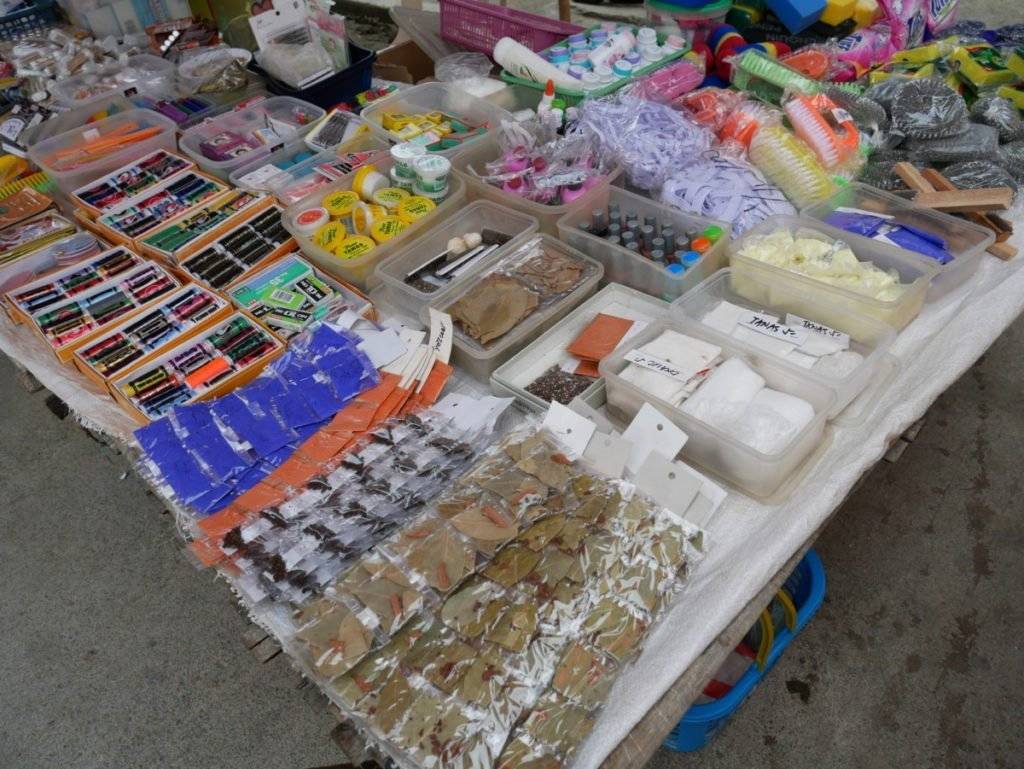
The meat section does not offer much the meat looks fresh.
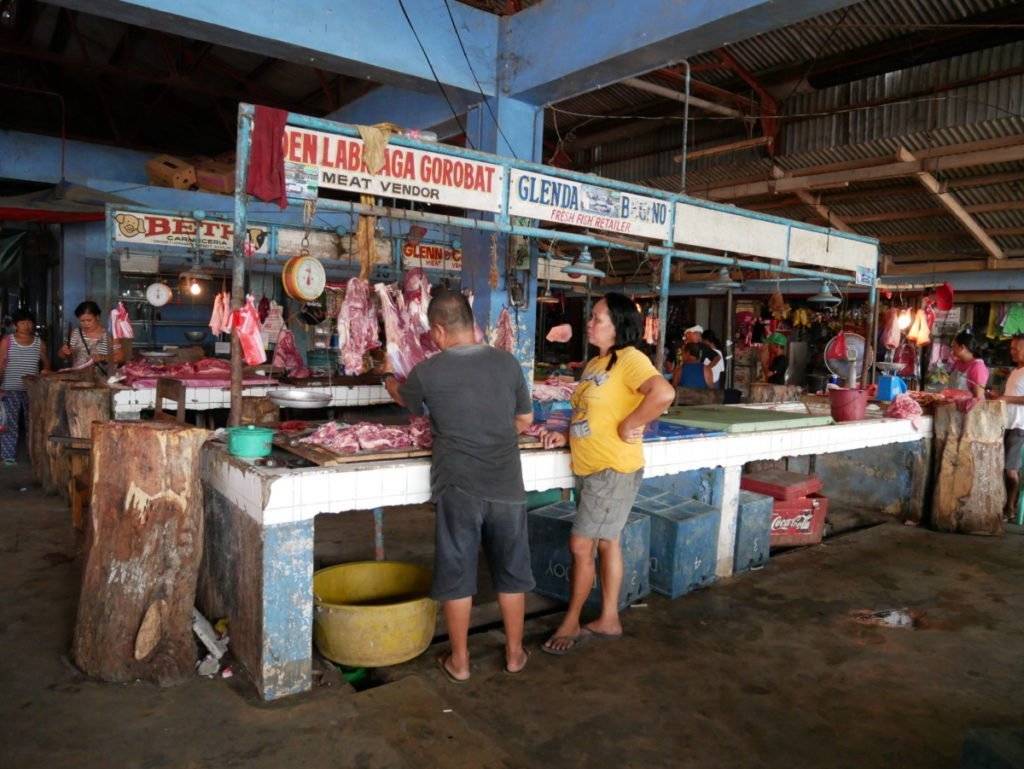
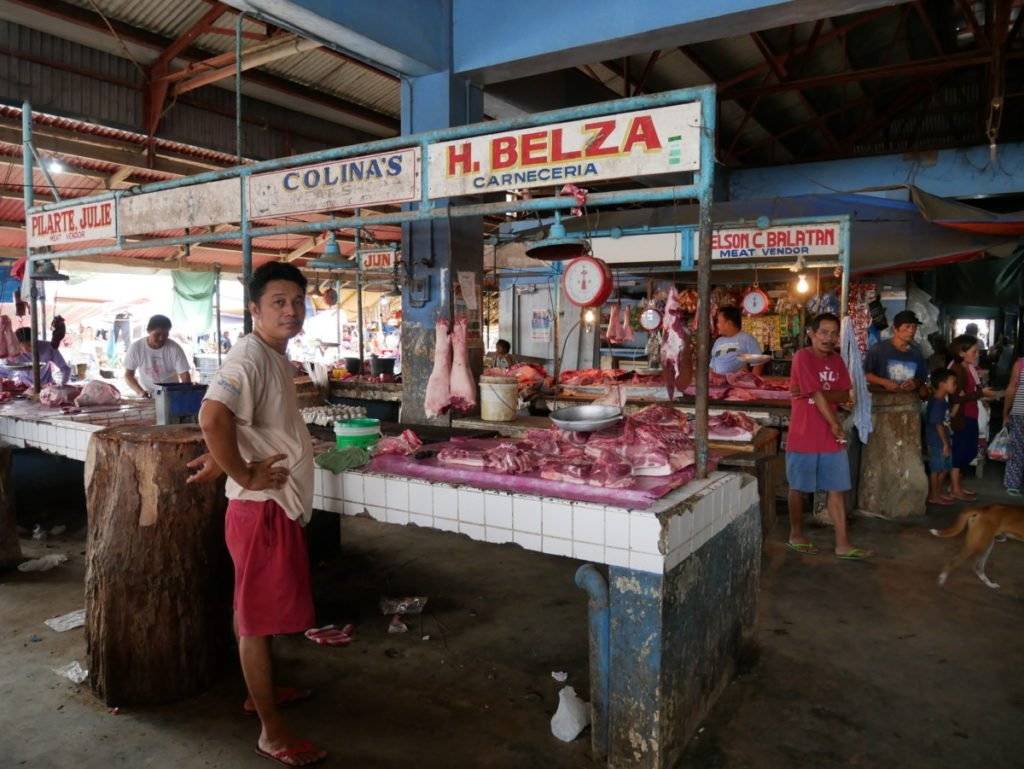
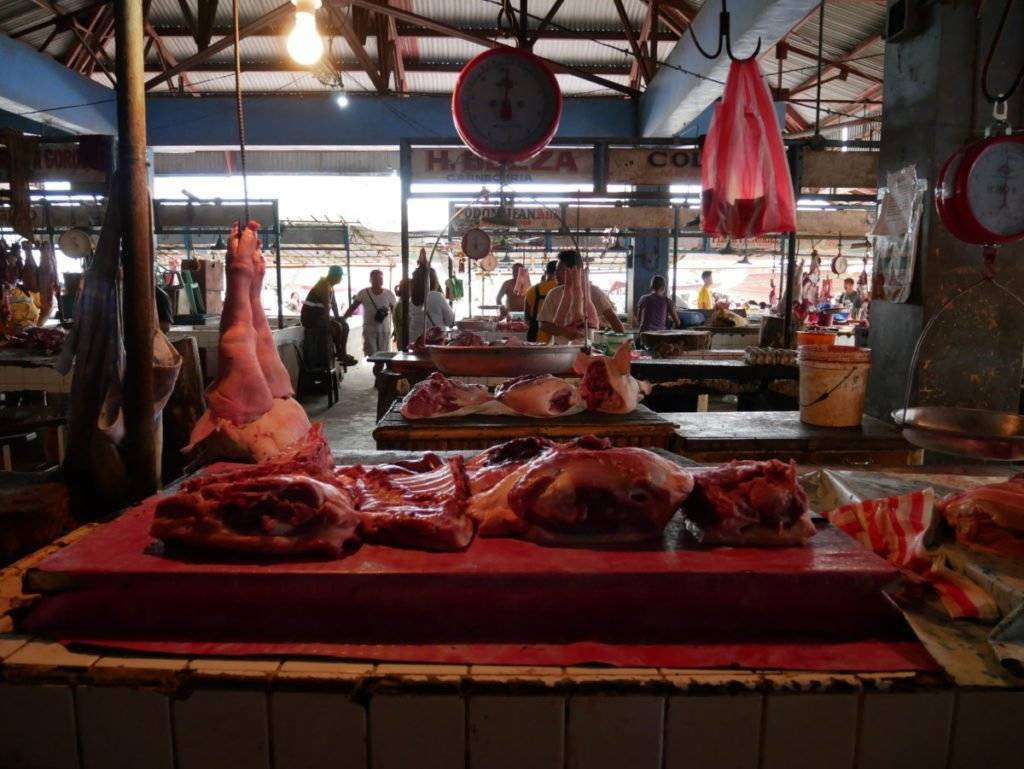
We bought a couple of kilo of pork belly for lunch. We just usually marinate pork belly with oyster sauce and roast them over coal.
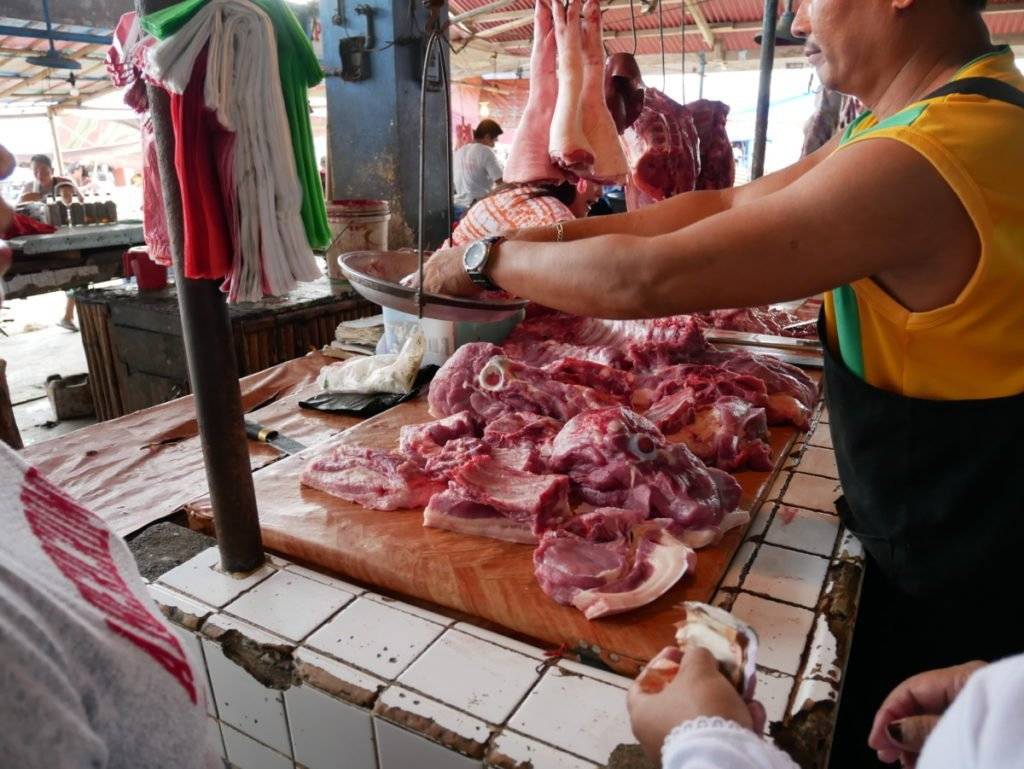
Just outside the market a man was selling pineapples. He had them on a sidecar of a motorcycle which is a good way of getting around selling your goods.
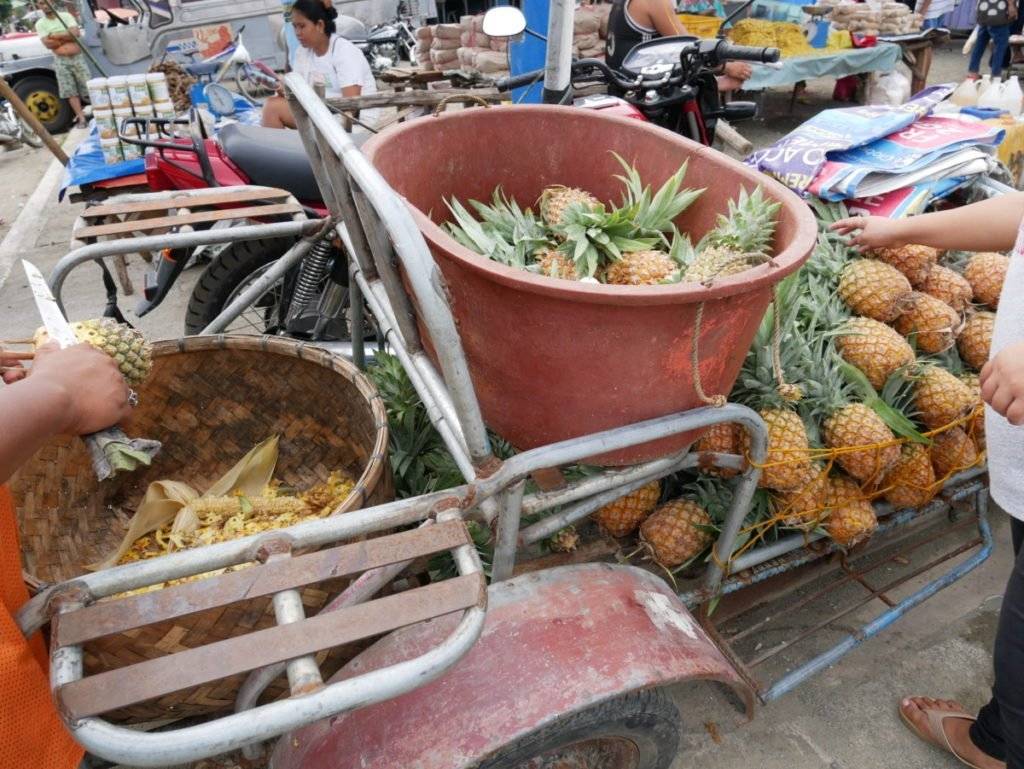
He sold them for 20 pesos each and that is around $.38 USD per pineapple. You could have him peel and slice the pineapples for you if you wish.
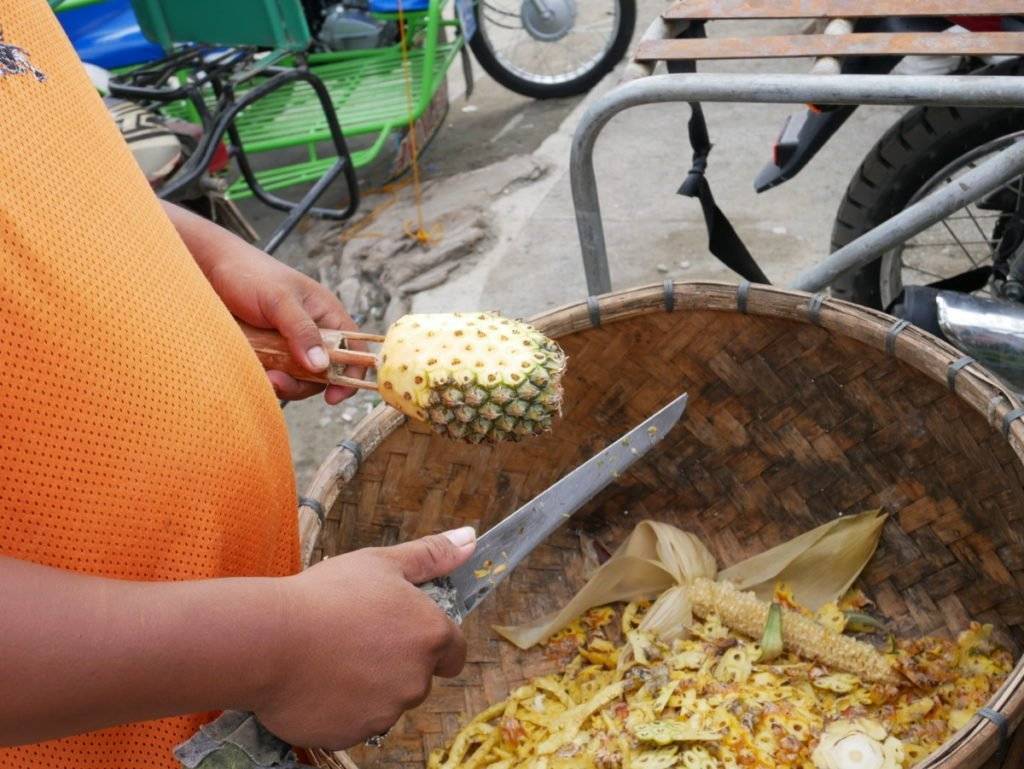


We got everything that we needed and it is time for us to end this trip. I hope you had a good time coming along with me to shop in this market. This concludes the second part of our journey and I have so many other places to share with you in the Bicol region. I hope you join me again for our next adventure.
Until then have an amazing day and keep on reaching for your goals in this journey that we call life.
Ready to Blog & Earn?
With TravelFeed, easily start your own travel blog and earn as you go. It's the smart platform for travelers who want to profit from their passion. Create a free account
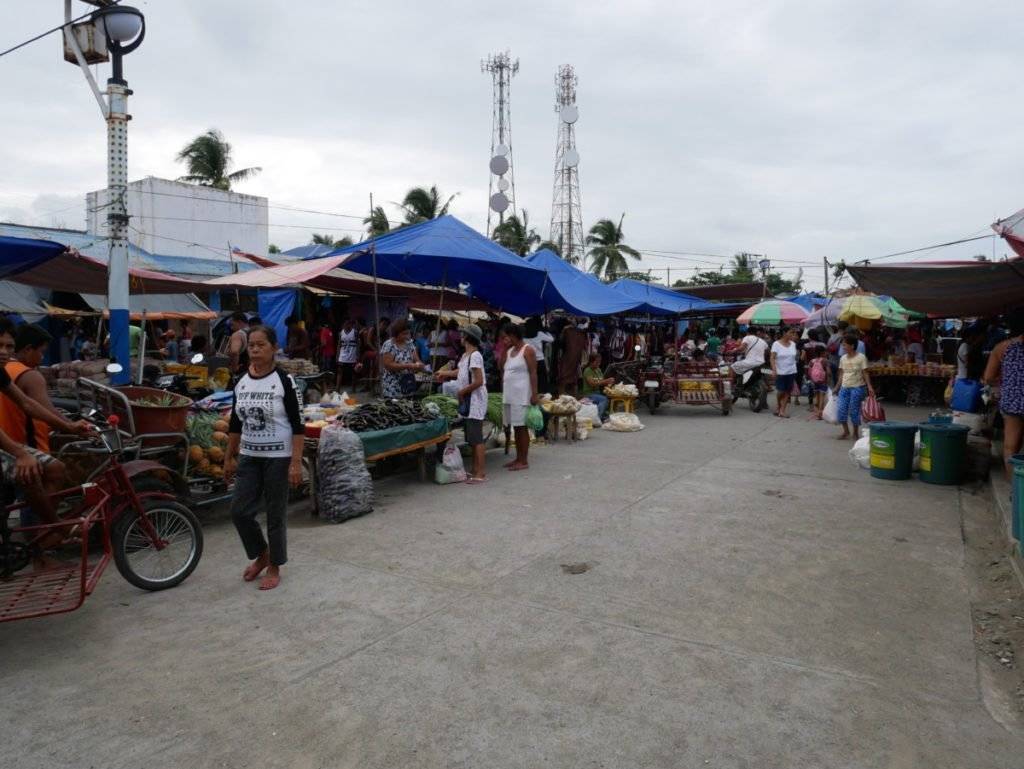
Resource

Don't Forget: Get Travel Health Insurance!
To make your trip a worry-free experience, TravelFeed recommends SafetyWing Nomad Insurance. It provides comprehensive health coverage while you travel, so you can focus on exploring, not the unexpected. Get a quote here
Visit and follow @steemitbloggers AKA #powerhousecreatives. A community that is exceptional, talented and engaging.
To have a glimpse of awesome content from the Philippines check out @bayanihan
Follow @surpassinggoogle to witness an extraordinary person in this platform and vote for @steemgigs as witness
Lumix GX85 12-32 mm kit lens





Posted from my blog with SteemPress : http://watersnake101.steemblogs.club/2019/09/22/balatan-public-market-beautiful-sunday/
Travel Resources for your trip to The Philippines
Recommended by TravelFeed
Flights: We recommend checking Kiwi.com to find the best and cheapest flights to The Philippines.
Accomodation: Explore the best places to stay in The Philippines on Booking.com, Agoda and Hostelworld.
Travel Insurance: Medical emergencies abroad can be pricey, but travel health insurance is not. We always use SafetyWing for affordable and reliable coverage.
Car Rental: For hassle-free car hiring, DiscoverCars is our trusted choice with a wide selection of vehicles.
Internet: Got an eSIM compatible phone? Airalo is perfect for reliable internet access during your trip. Just install it before you go, and you're set!
Day Trips & Tours: We recommend GetYourGuide for a variety of well-organized and enjoyable activities.
Travel Planner: Need a hand planning? Our free travel planner chatbot is your personal guide to The Philippines. Chat now.
Disclosure: Posts on TravelFeed may contain affiliate links. See affiliate disclosure.
